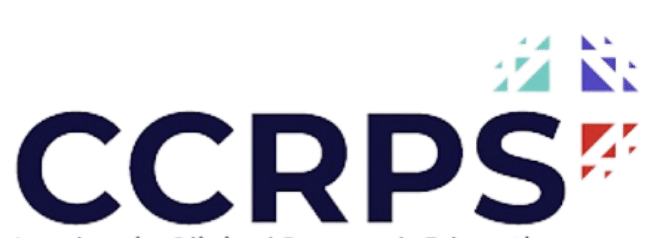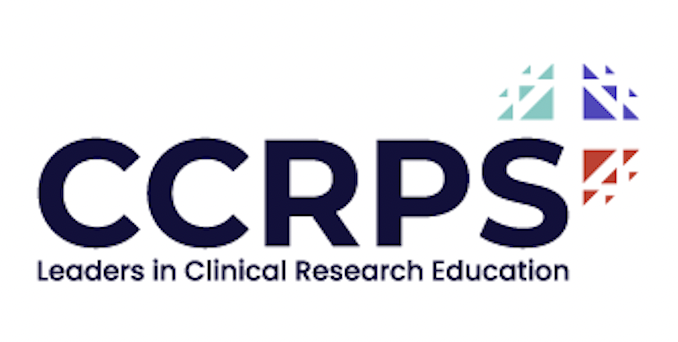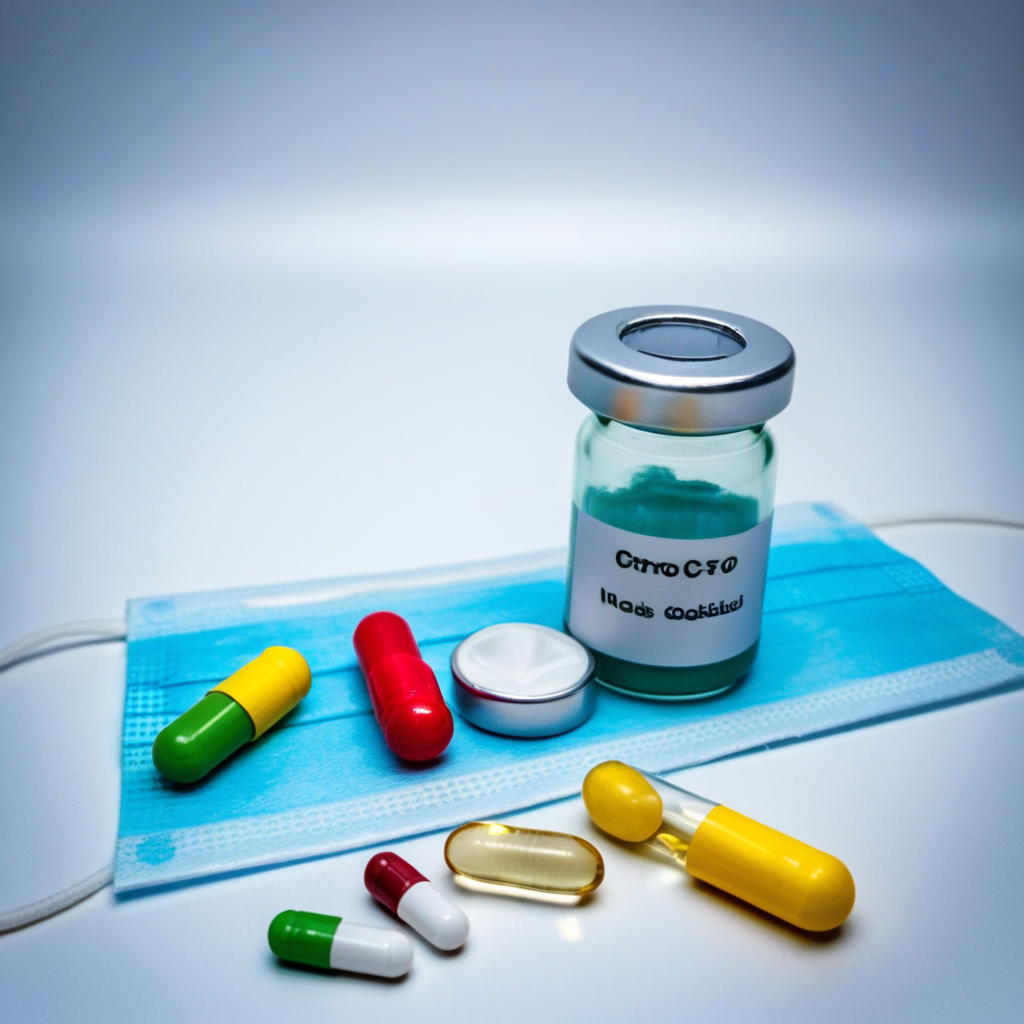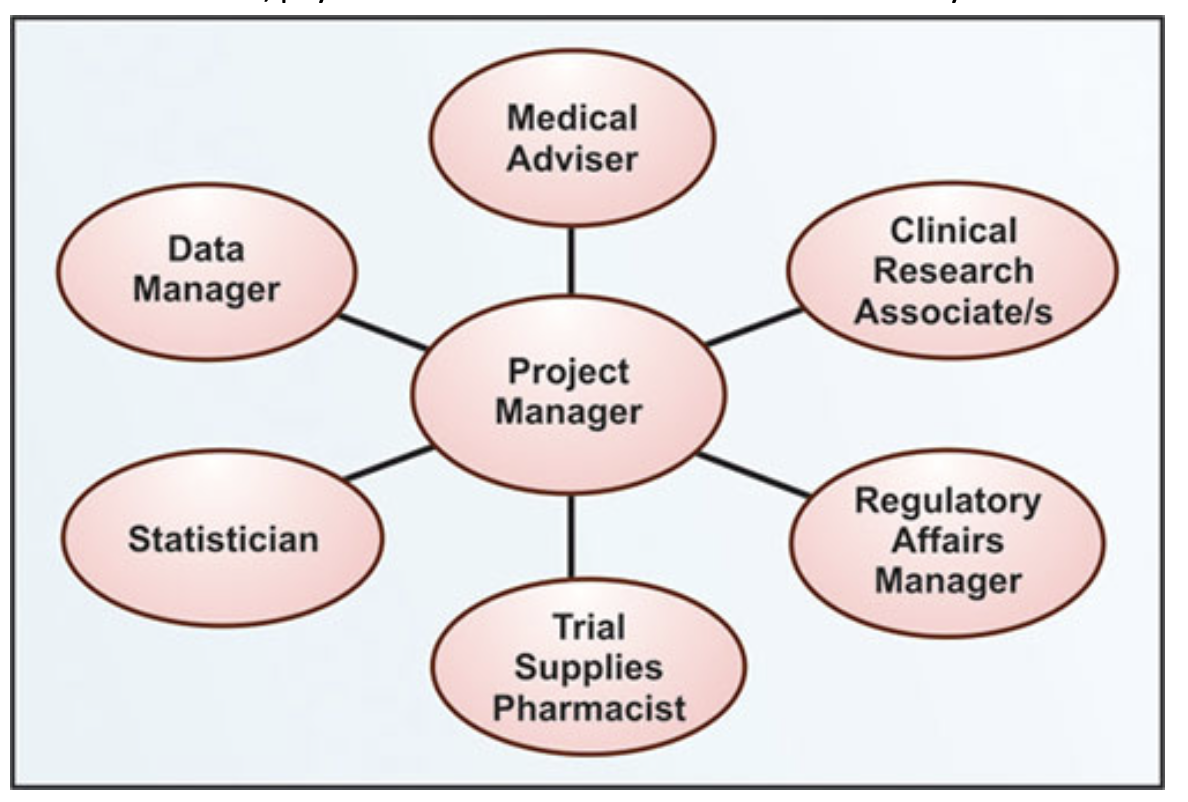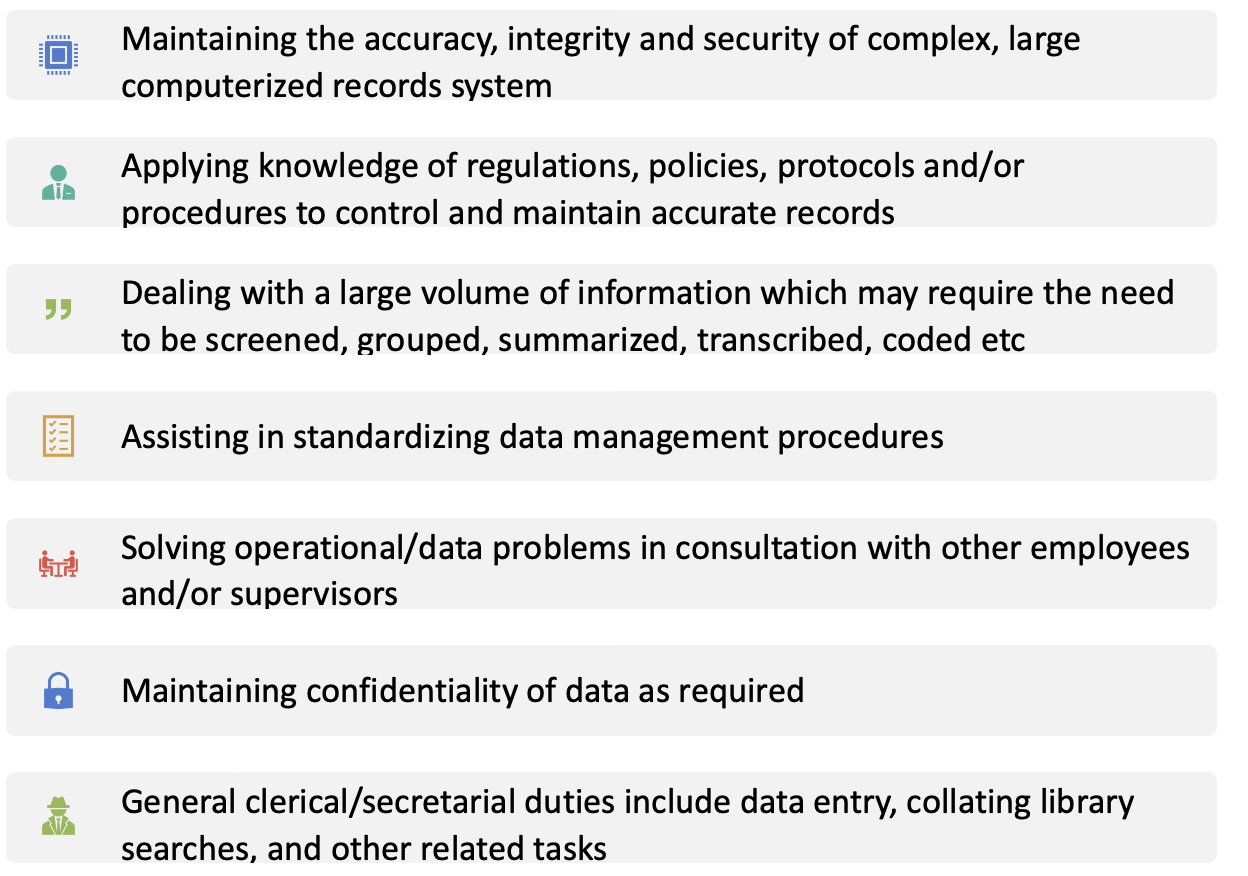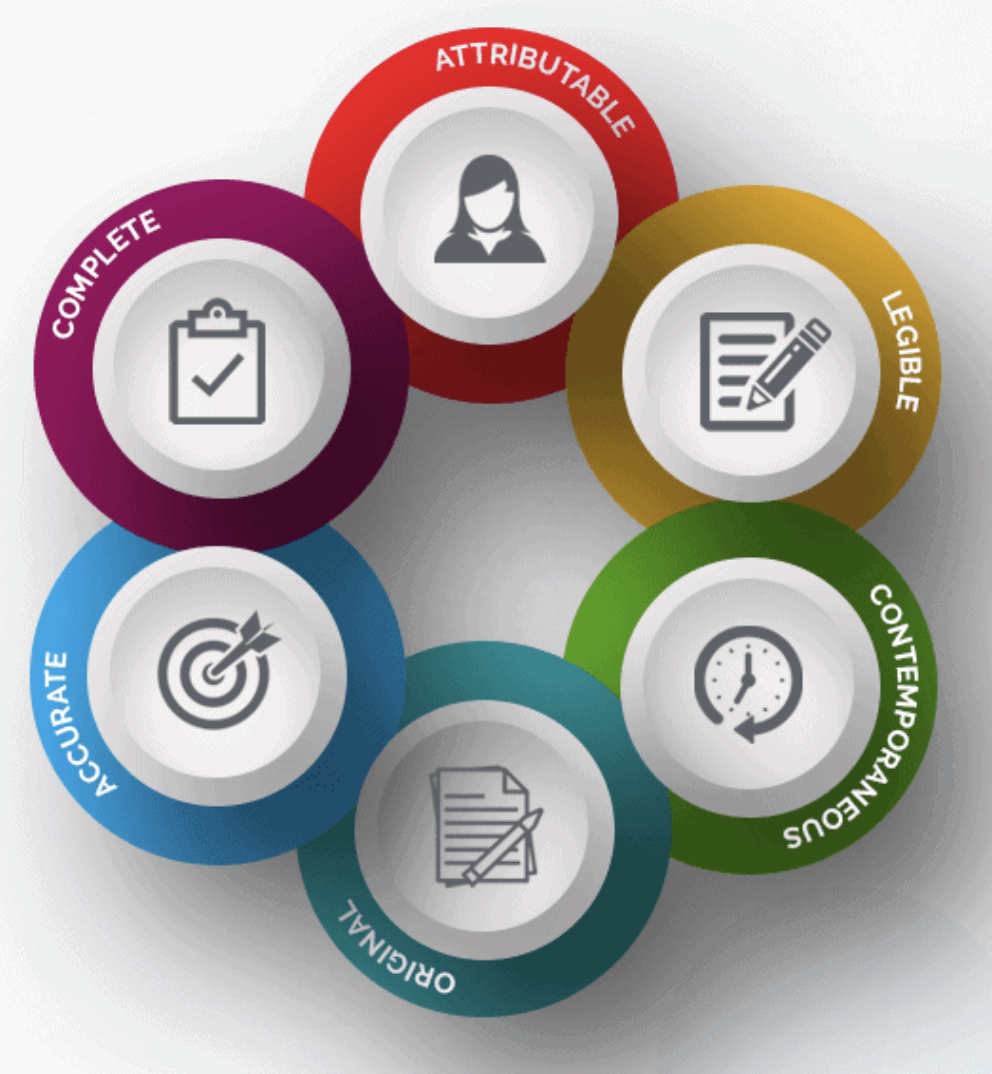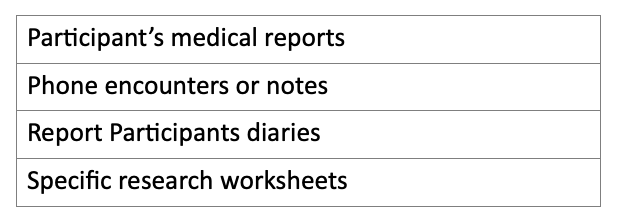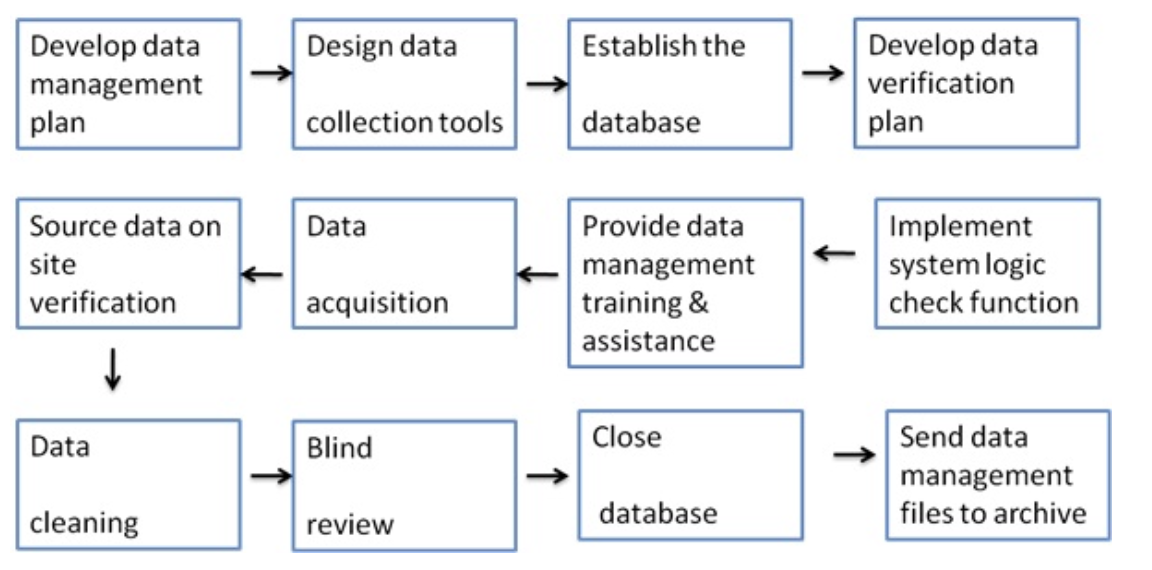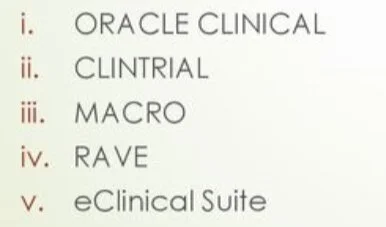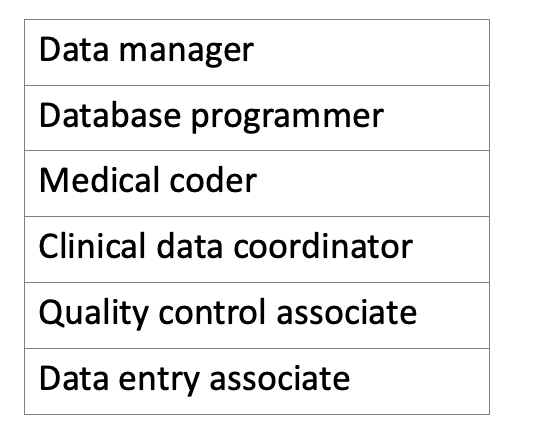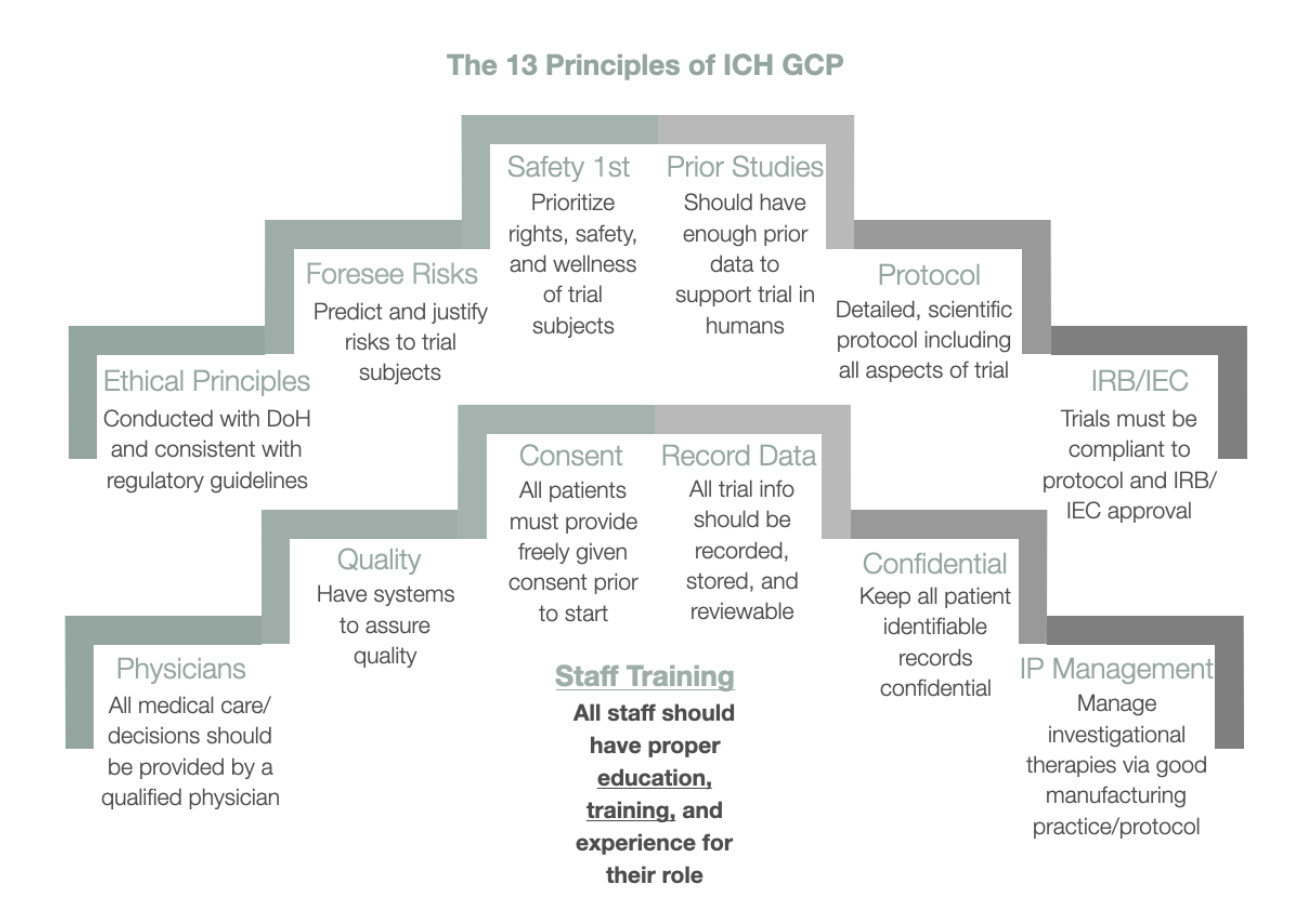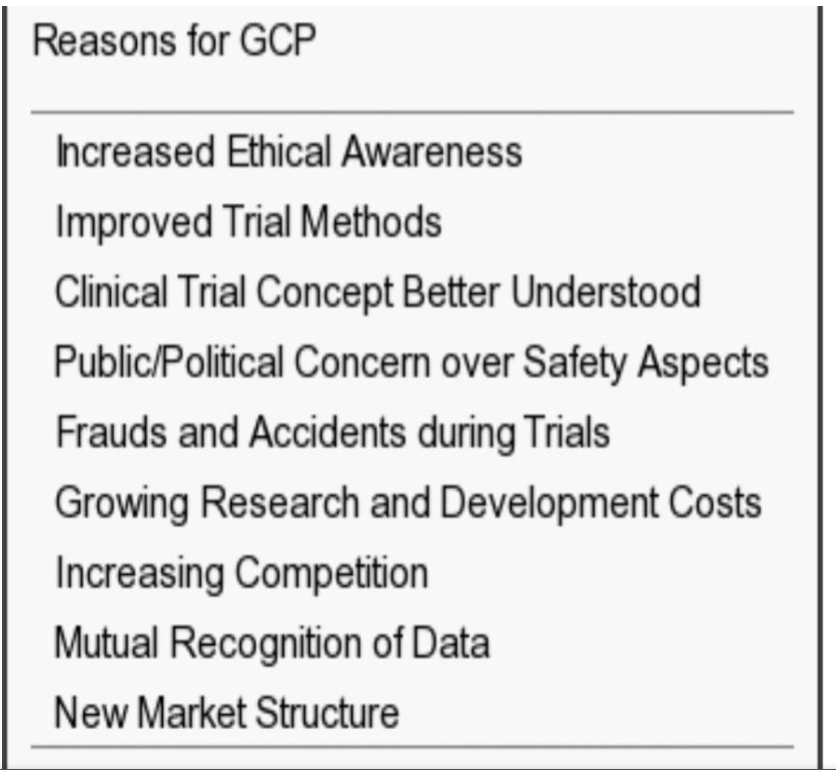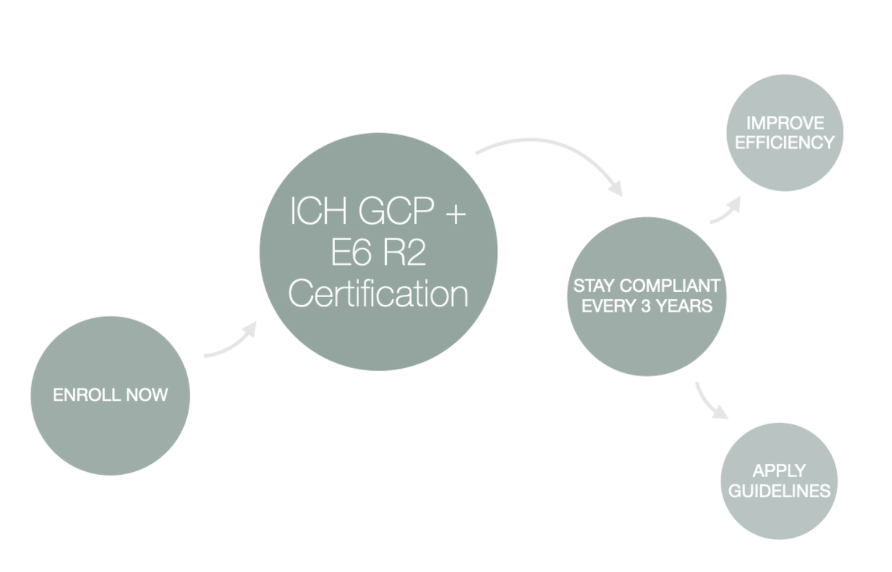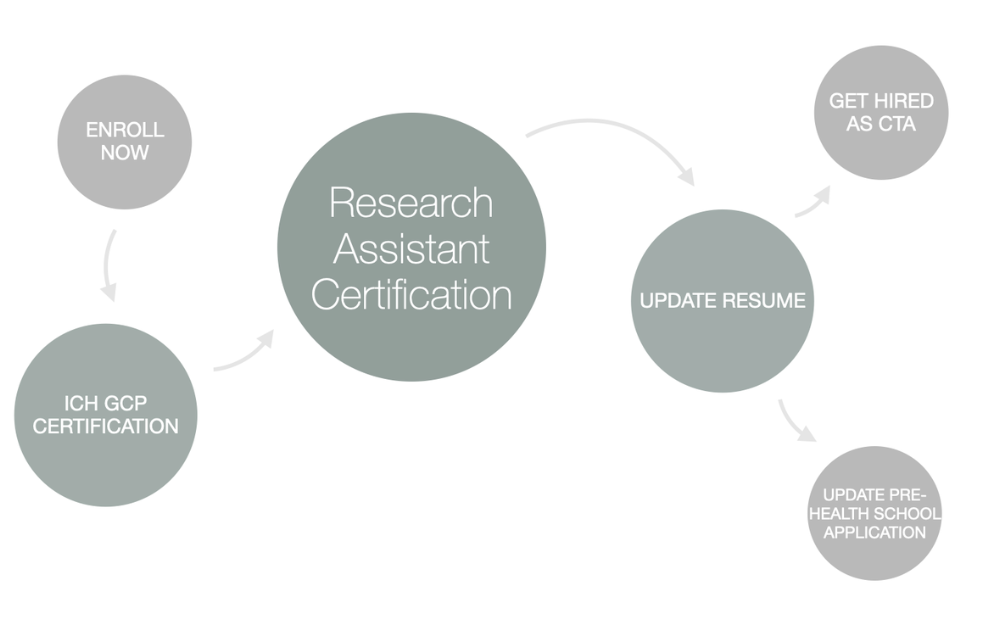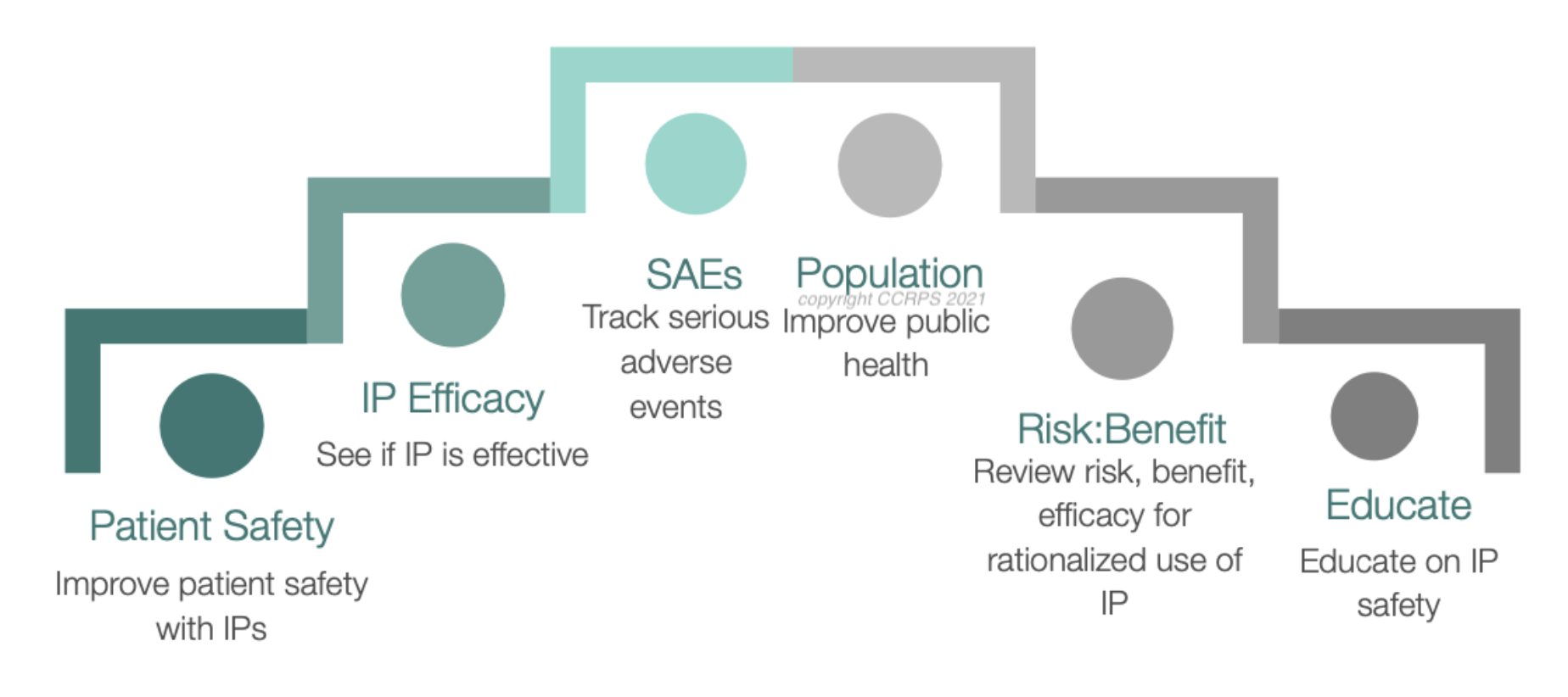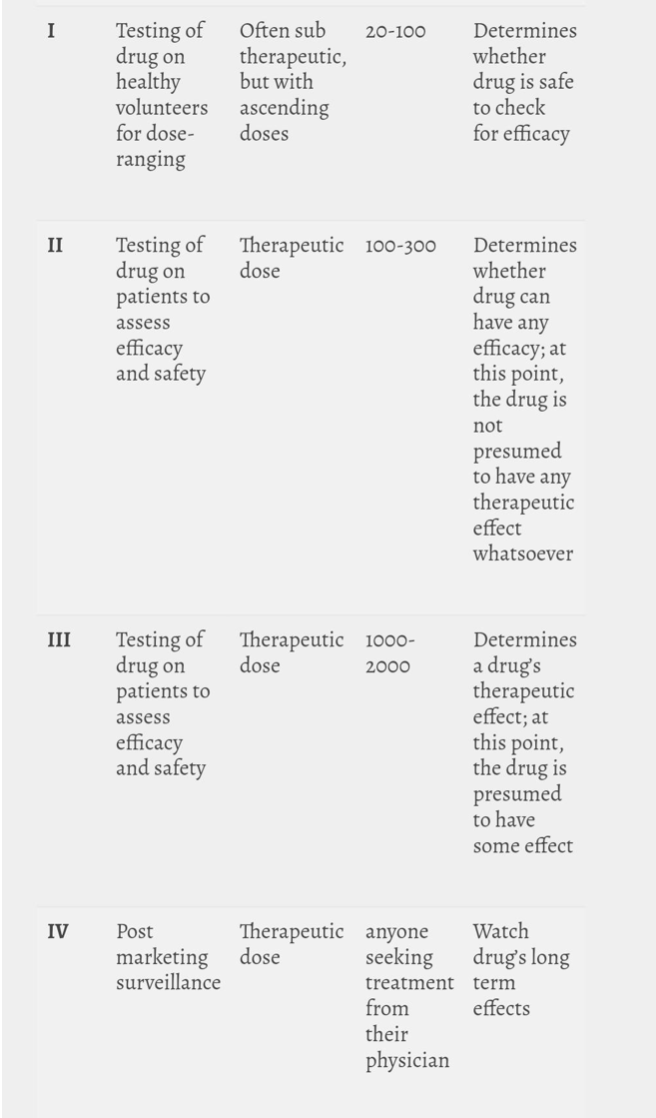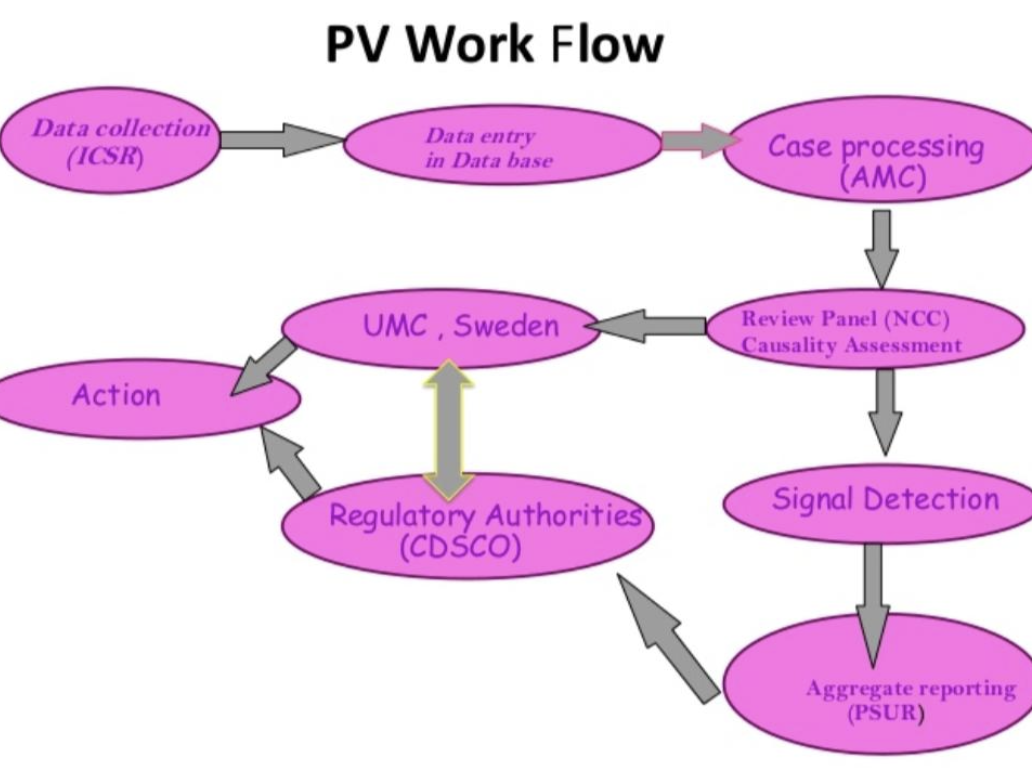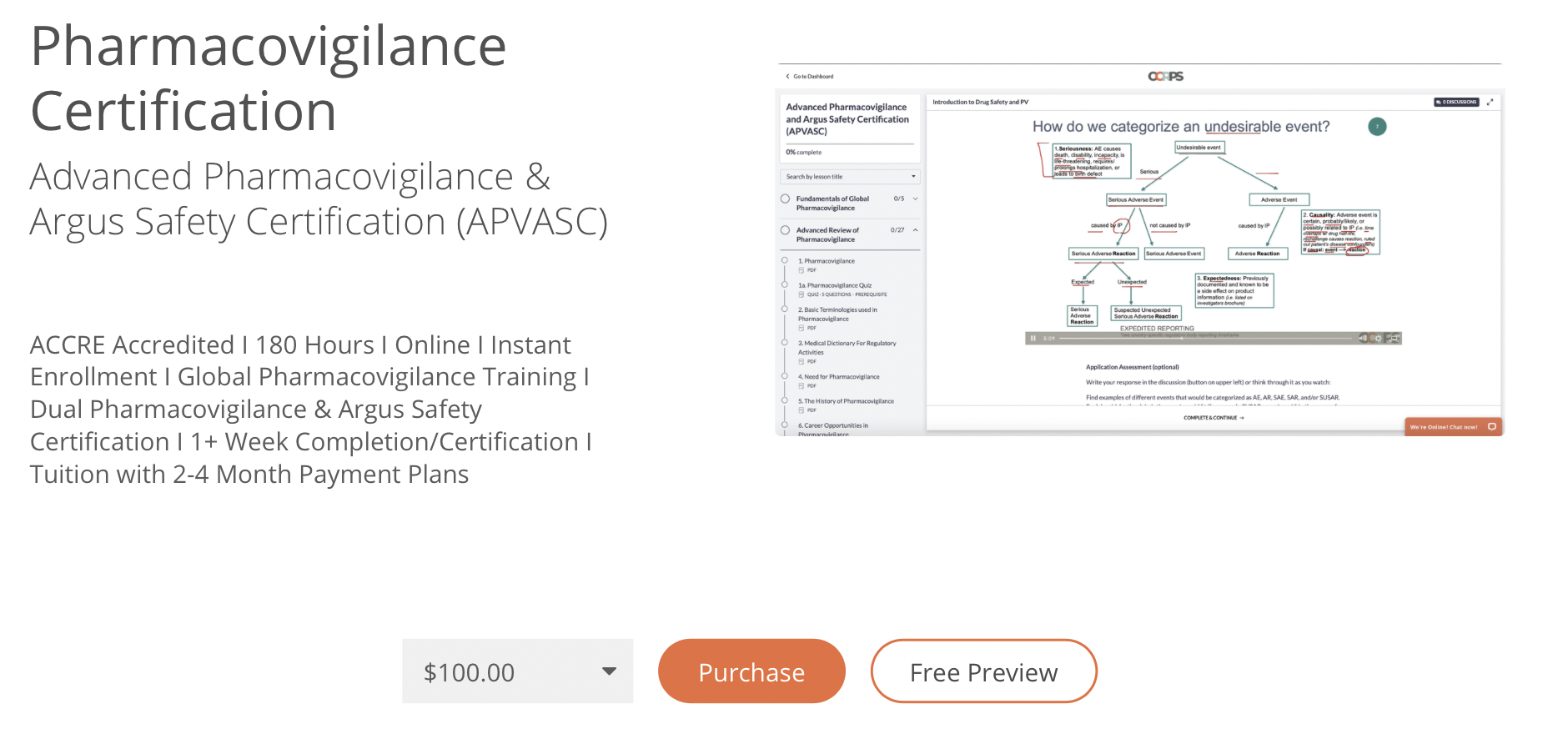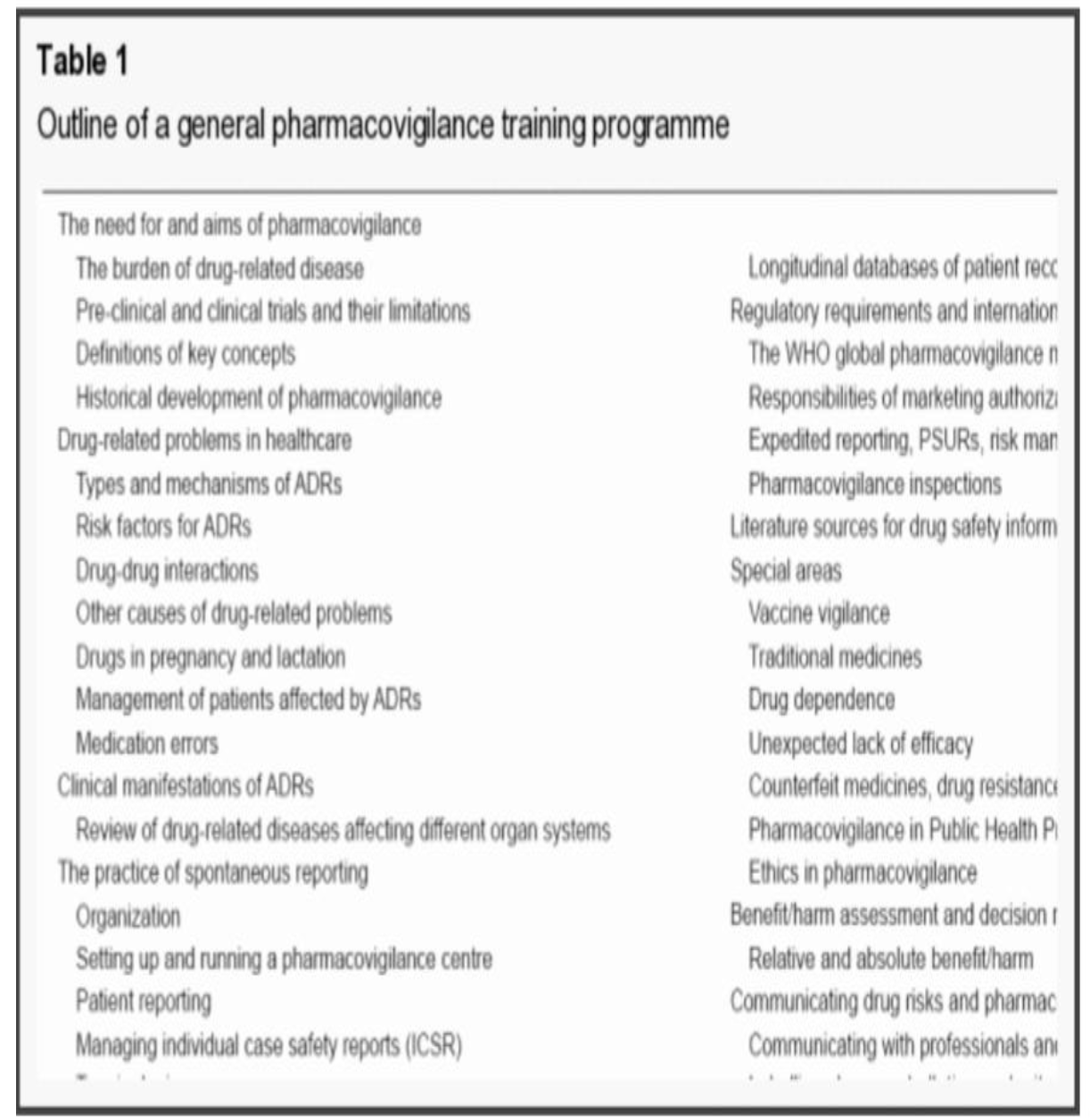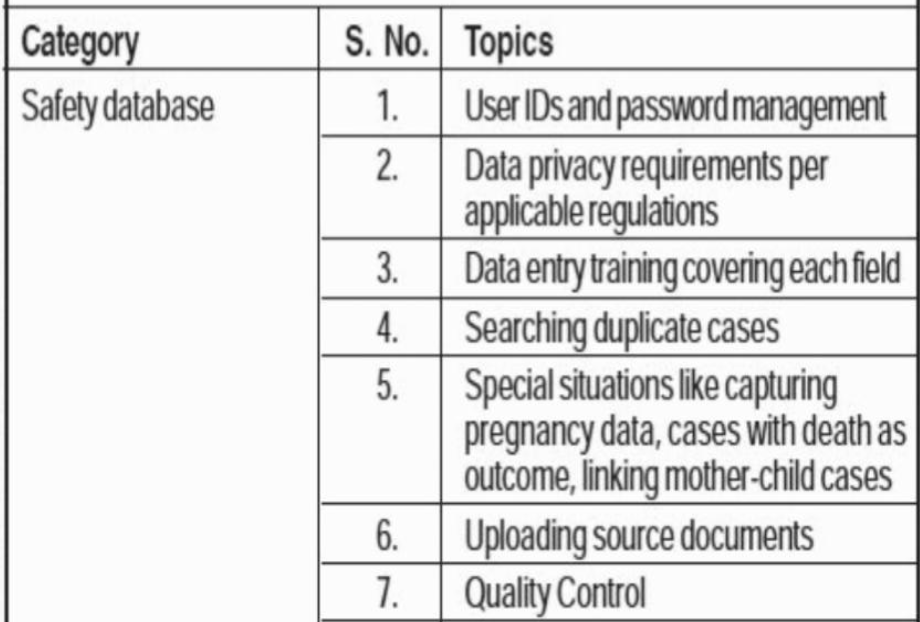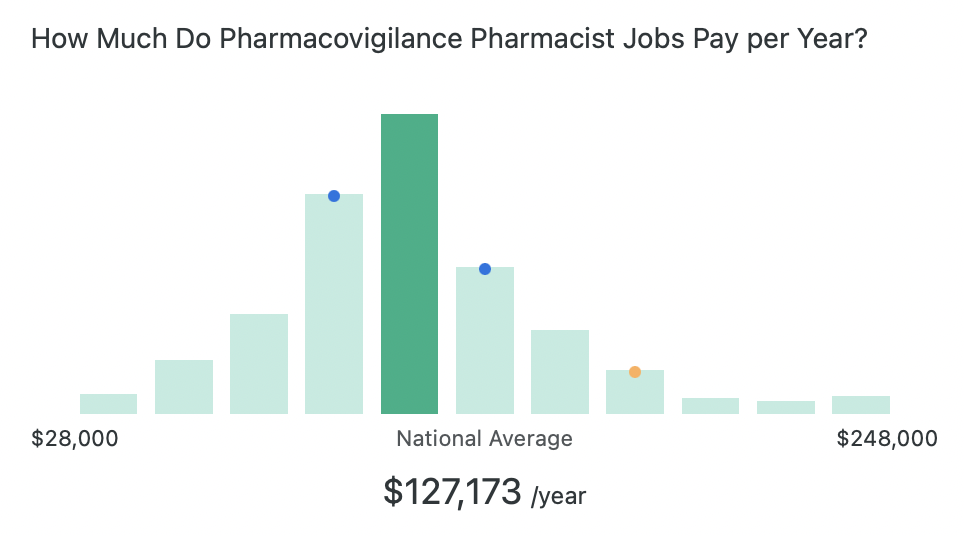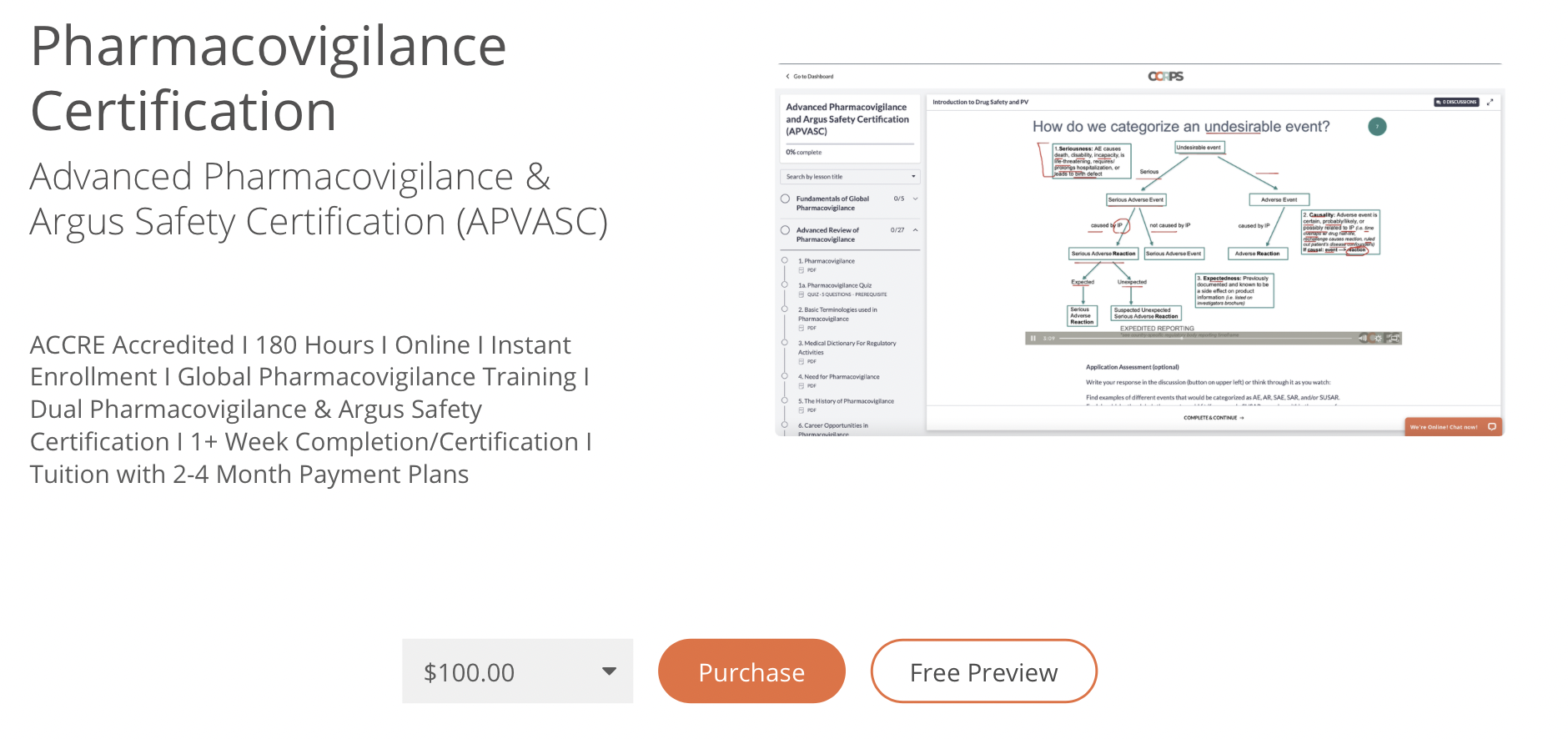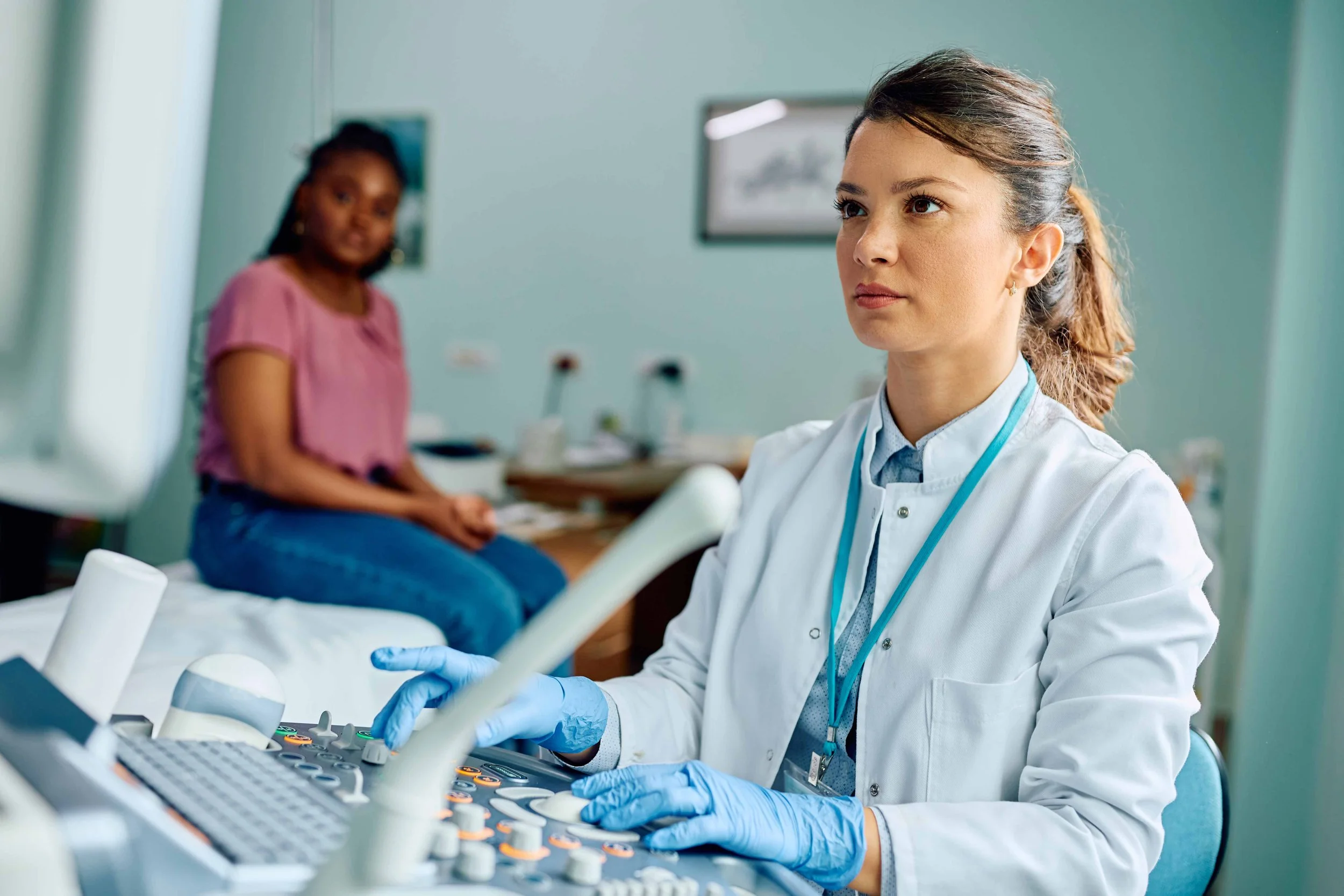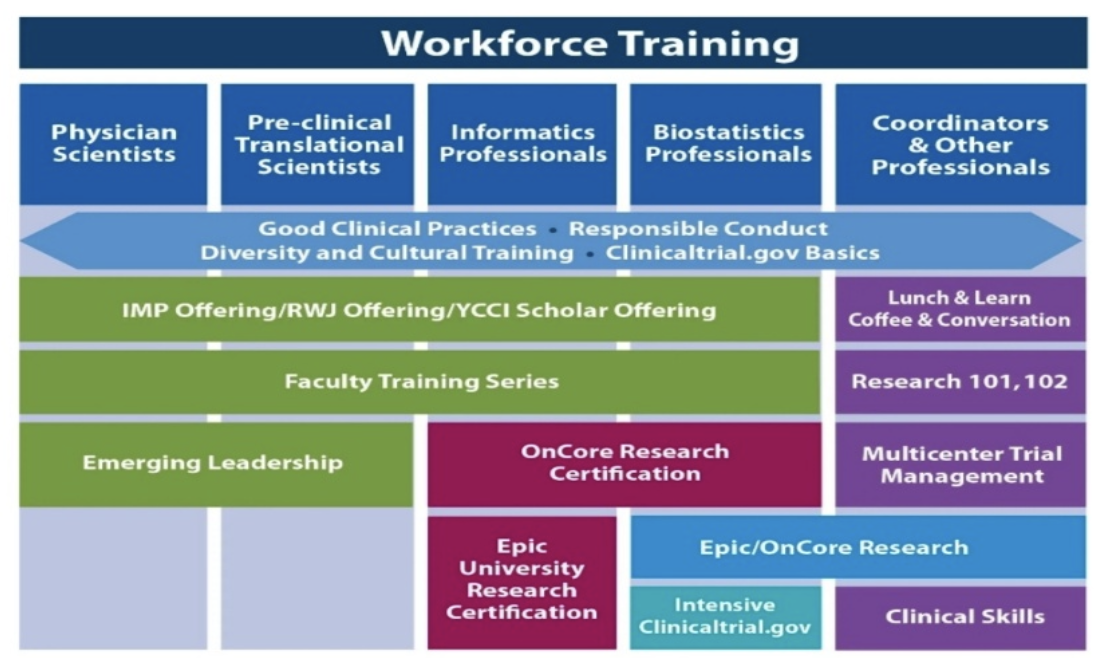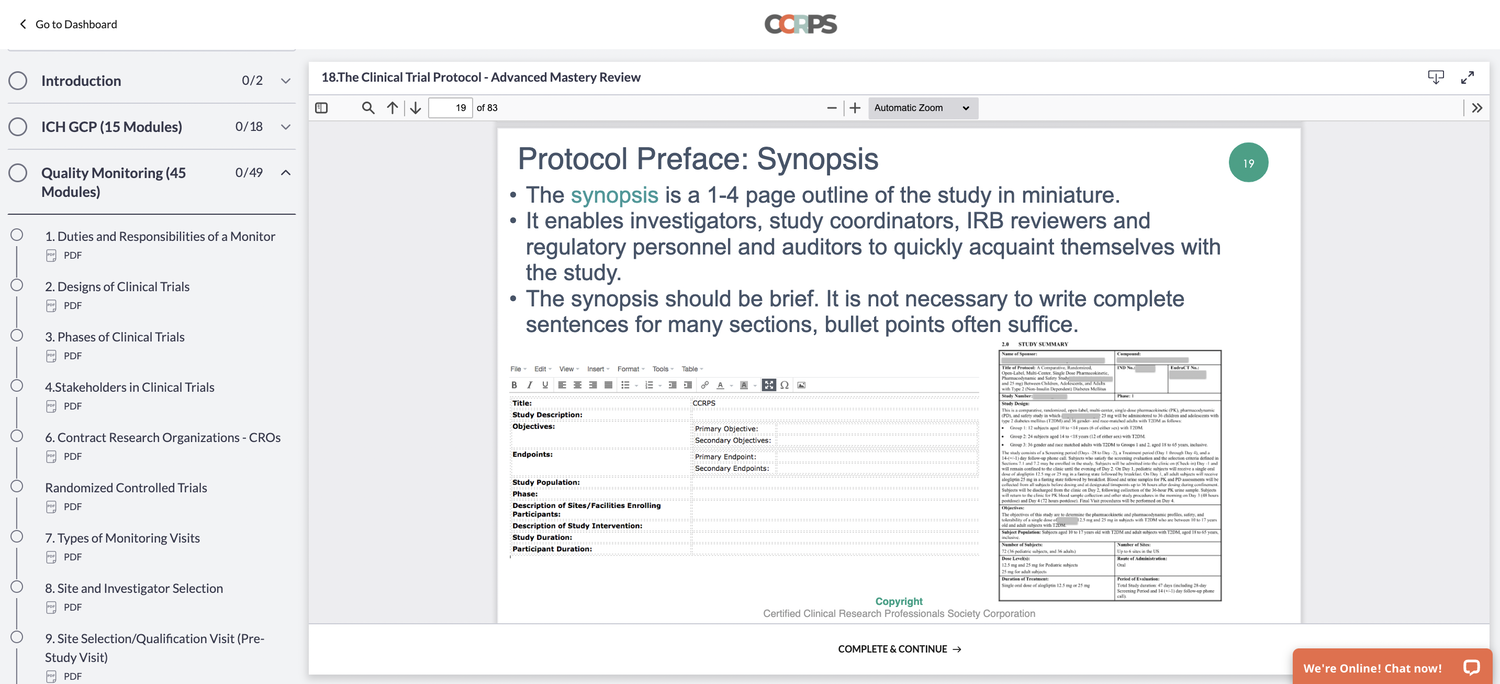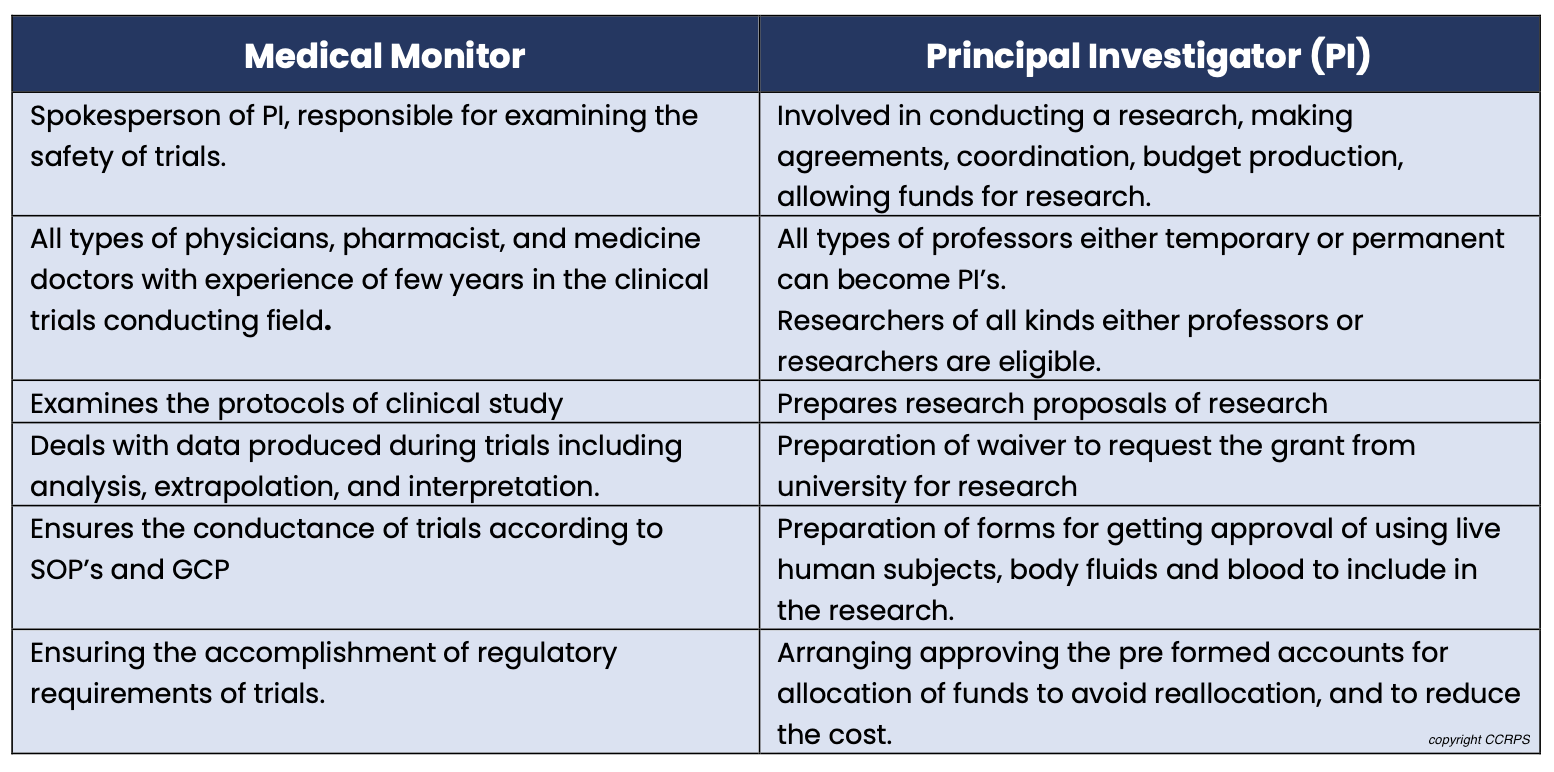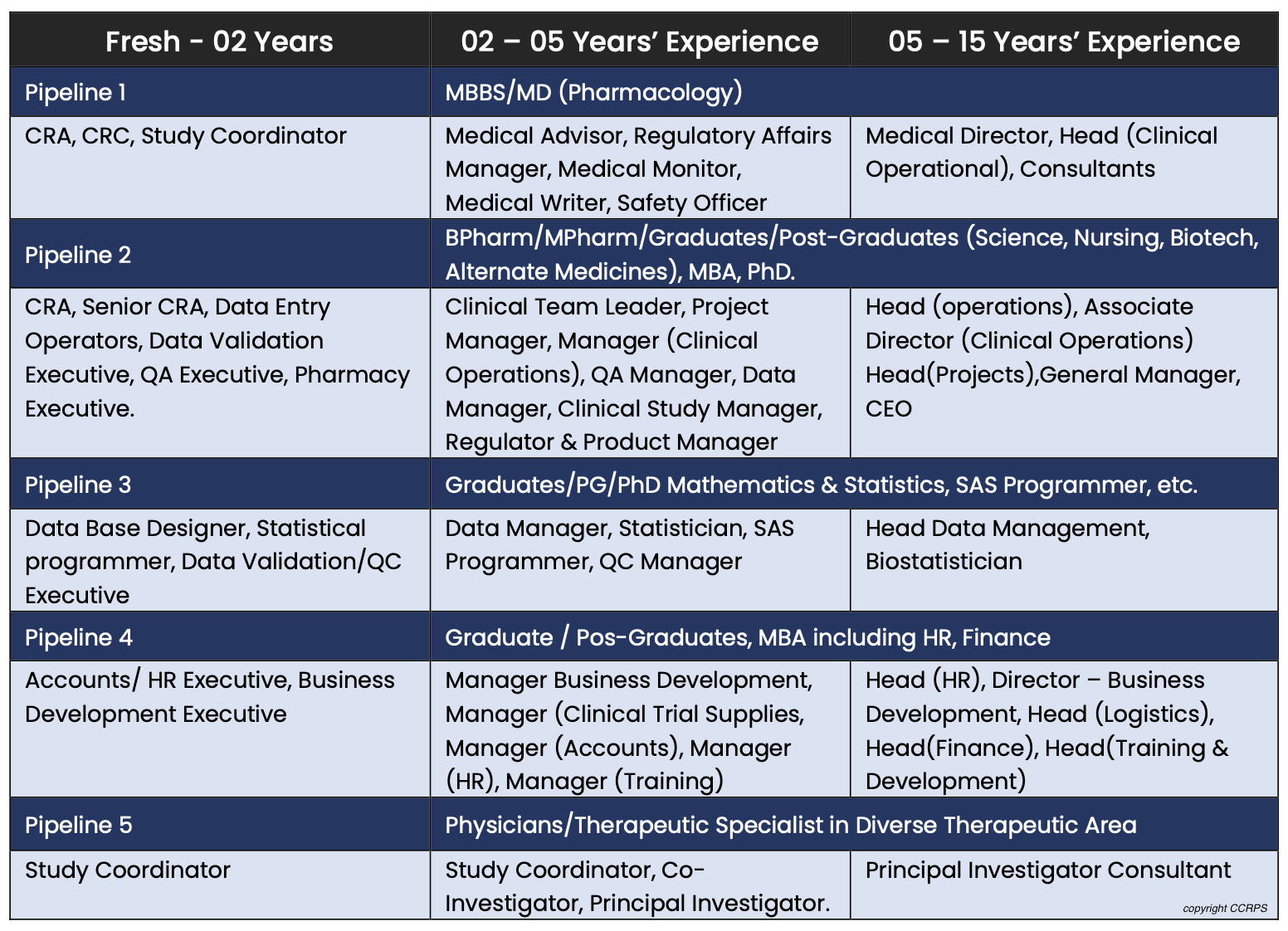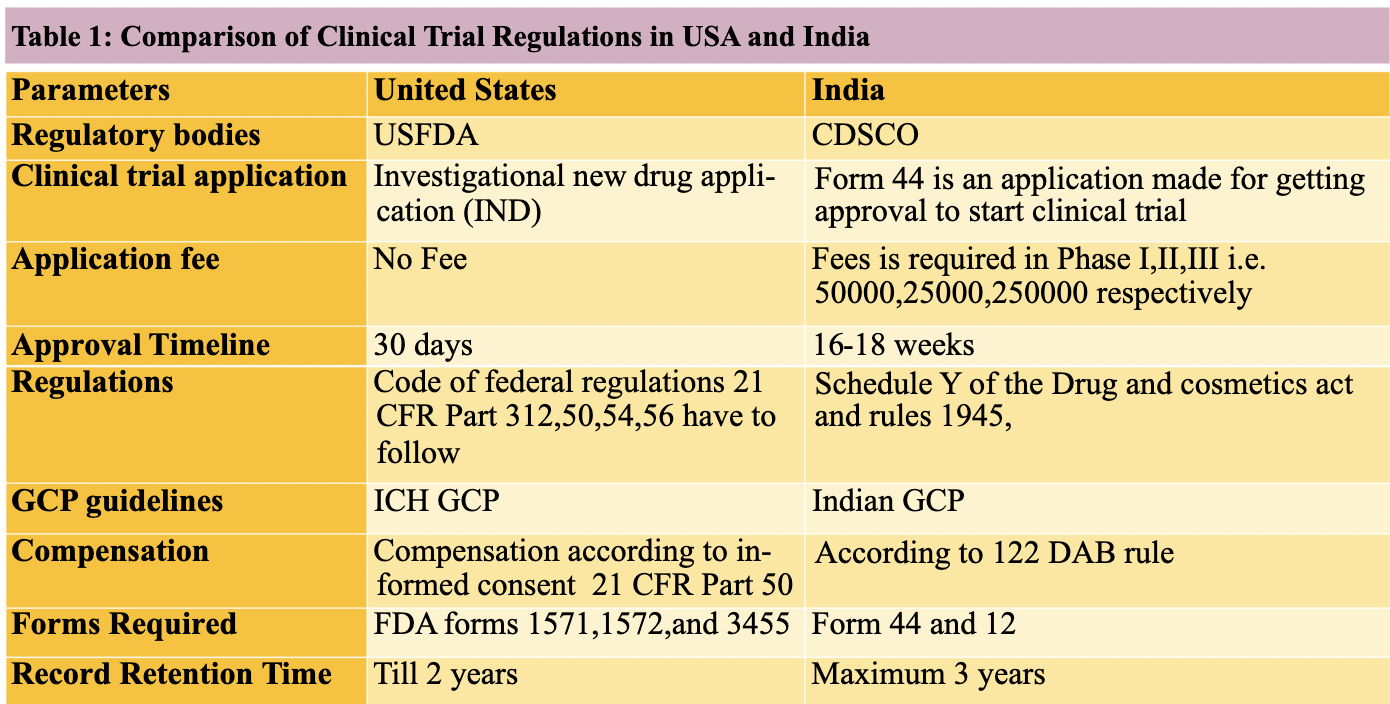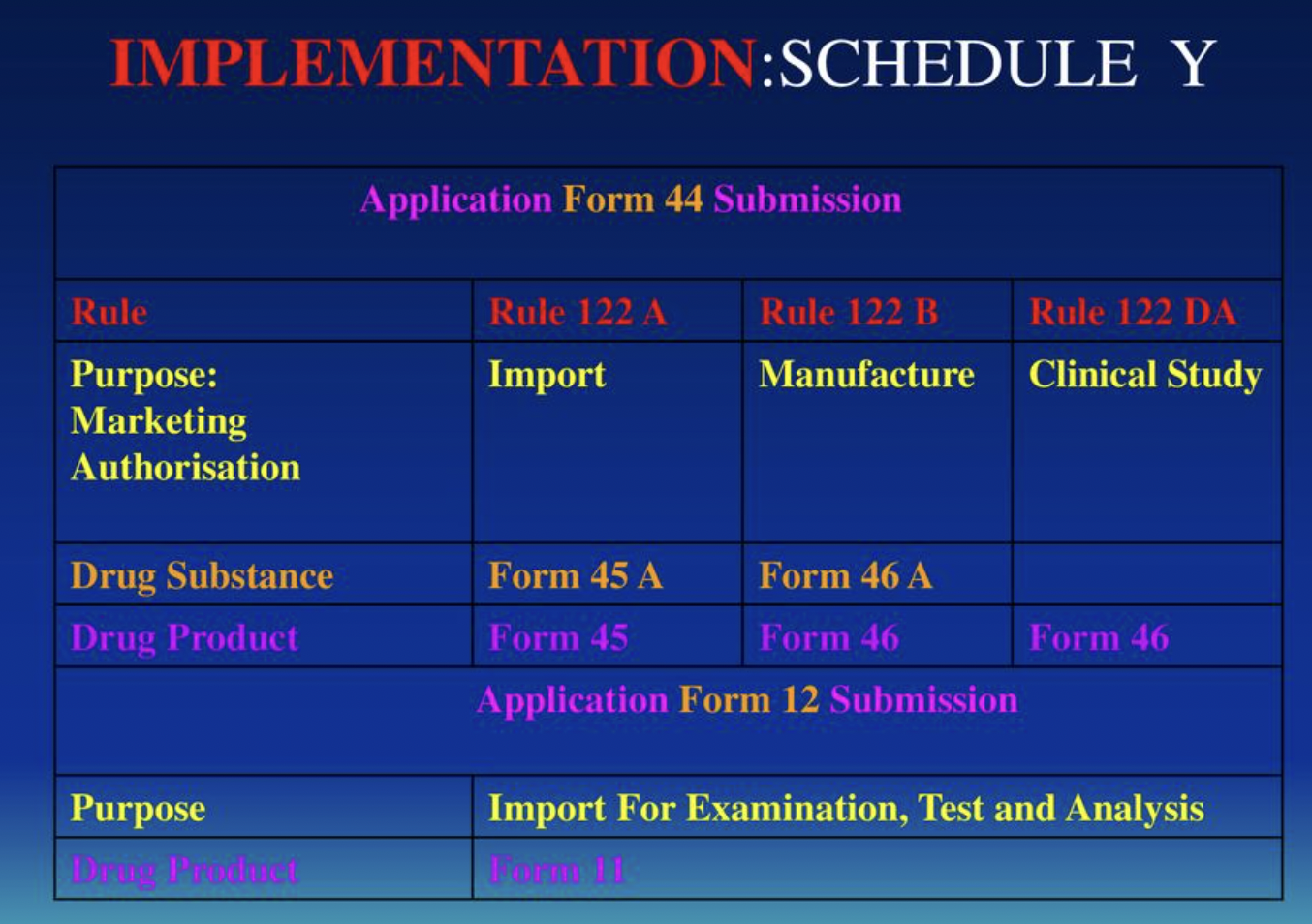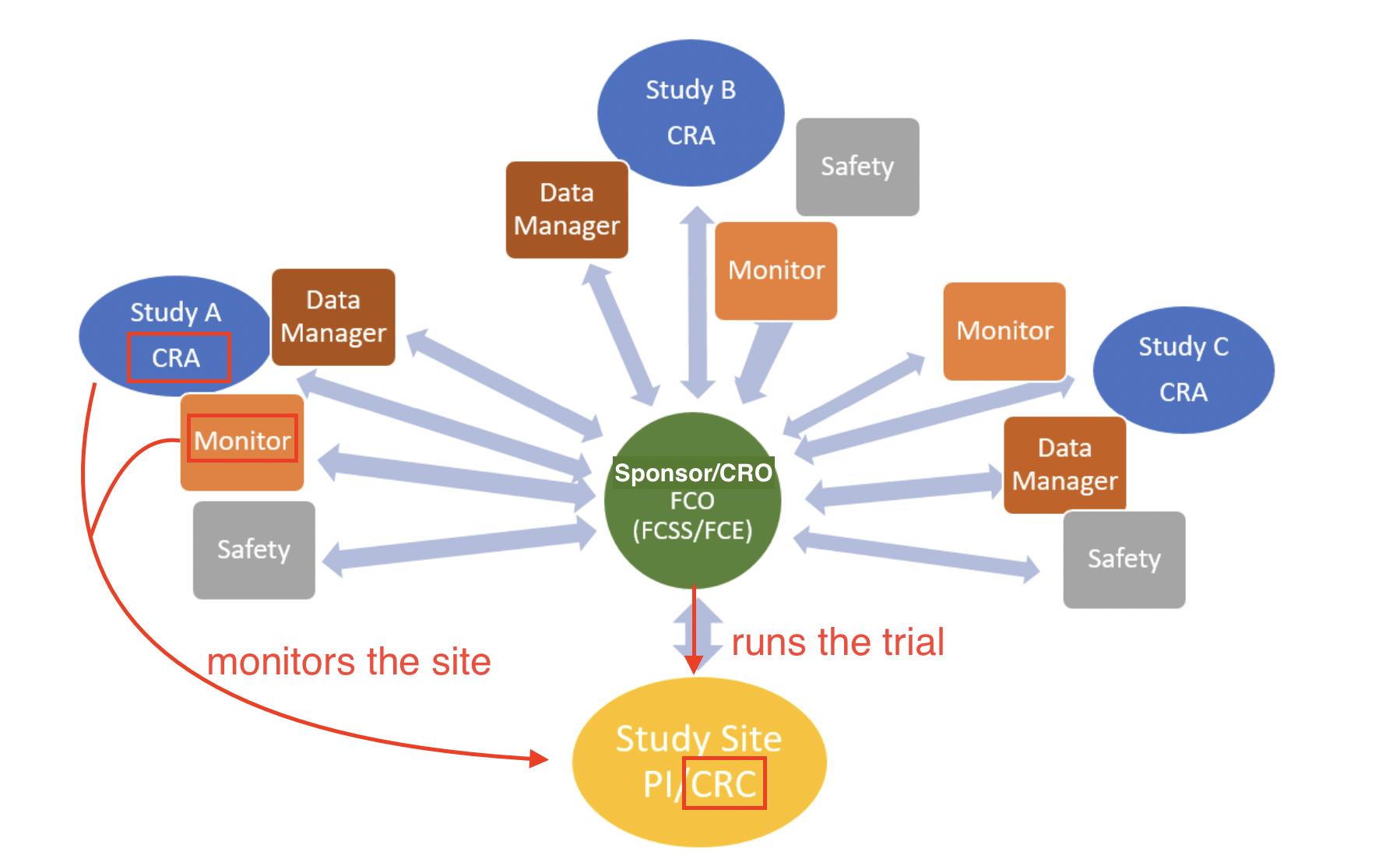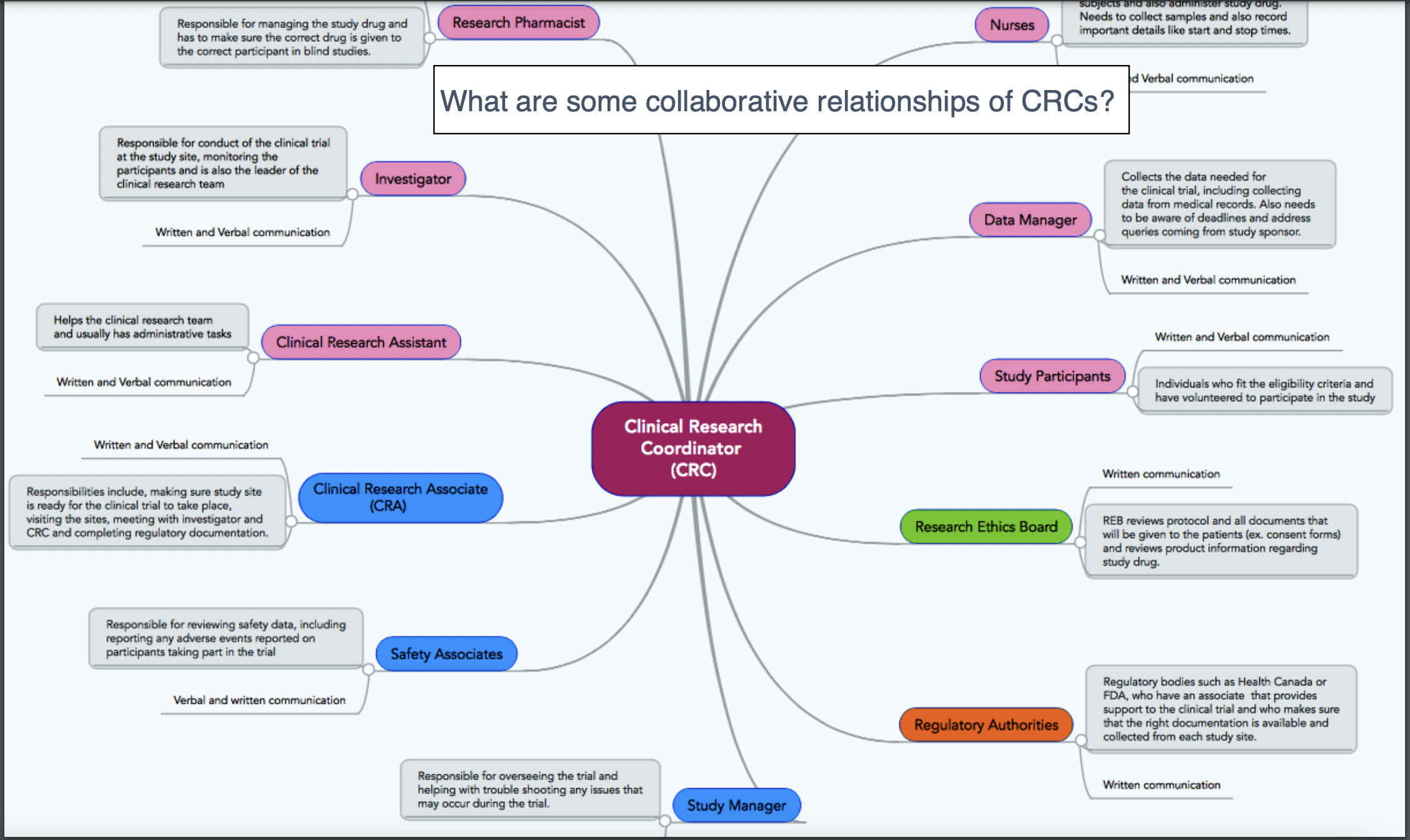Introduction to Clinical Trial Training
Have you ever wondered how new medications and treatments make it from the lab to your doctor's office? The answer lies in clinical trials, meticulously designed research studies that test the safety and effectiveness of new healthcare interventions on human volunteers.
If you're curious about this fascinating field and considering a career in clinical research, an introduction to clinical trial training is a perfect first step. This blog post will equip you with the foundational knowledge to jumpstart your journey.
Why the Rise in Clinical Research Training?
The field of clinical research has seen a significant rise in demand over recent years. The evolving landscape of the pharmaceutical and biotechnology industries, with a constant push for new and improved treatments, plays a significant role in this growth.
Clinical Research Associates: The Overseeing Force
A clinical research associate (CRA) is a crucial part of the clinical trial process. They act as the eyes and ears of the sponsor, overseeing the well-being of subjects and ensuring that the study adheres to strict regulatory guidelines. They are responsible for tasks like monitoring investigator sites, ensuring data integrity, and reporting any issues or deviations from the protocol. For those interested in becoming a CRA, consider this specialized CRA training course.
Benefits of Clinical Trial Training
With the clinical research market projected for continued growth, a thorough understanding of clinical research training is essential. Here's how it benefits you:
Equipping Yourself for a Rewarding Career: This training provides the necessary skills and knowledge to launch a successful career in clinical research. There are various specializations within the field, allowing you to tailor your path to your interests.
Contributing to Medical Advancements: By participating in clinical trials, you play a vital role in developing new treatments and improving patient care. The knowledge gained through training empowers you to be a valuable asset in this endeavor.
Strong Job Market Outlook: The demand for qualified clinical research professionals is high and expected to rise further. This training positions you to take advantage of this growing market.
What Does Clinical Trial Training Entail?
Clinical trial training equips individuals with the necessary understanding of:
The Clinical Research Process: From study design and participant recruitment to data collection and analysis, you'll gain insights into the entire lifecycle of a clinical trial.
Ethical Considerations: Protecting participant safety and well-being is paramount. Training emphasizes informed consent, patient confidentiality, and responsible research conduct.
Regulatory Requirements: Clinical trials adhere to strict guidelines set forth by regulatory bodies. Training ensures you understand these regulations and can navigate them effectively.
Specific Roles and Responsibilities: The clinical research team comprises various professionals, each with distinct duties. Training clarifies your role and how it contributes to the successful execution of the trial.
Who Should Consider Clinical Trial Training?
This training is valuable for anyone interested in a career in clinical research, including:
Clinical research coordinators (Consider the Clinical Research Coordinator course)
Data managers
Clinical trial assistants (Explore the Clinical Trials Assistant Training)
Regulatory affairs specialists
Research nurses
Physicians interested in research (Check out the Advanced Principal Investigator Physician Certification)
Where to Find Clinical Trial Training
There are numerous avenues to pursue clinical trial training. Here are some options to consider:
Online Courses: Several organizations offer introductory and advanced online courses in clinical research, including Pharmacovigilance Certification and ICH-GCP.
Universities and Colleges: Many academic institutions provide certificate programs or degrees in clinical research.
Professional Associations: Industry associations often host workshops and training programs specifically designed for clinical research professionals.
Begin Your Clinical Research Journey
By taking an introduction to clinical trial training, you'll unlock a world of possibilities in healthcare advancement. You'll gain the foundational knowledge to make informed decisions about your career path in this dynamic and ever-evolving field.
Remember, this is just the beginning! As you delve deeper, you'll discover the profound impact clinical trials have on improving human health and shaping the future of medicine.
I. Clinical Research Training: Background and Importance
Before diving into the specifics of clinical research training, it's necessary to understand what clinical research is and its importance in the field of medicine. Clinical research refers to the systematic study of potential new drugs, medical devices, and techniques to establish their safety and efficacy before they can be approved for use by regulatory authorities. In simple terms, clinical research aims to ensure that new treatments and therapies are both safe and effective for human use, protecting the public from potentially harmful side effects or complications.
Clinical research, thus, plays a key role in the process of bringing novel medical treatments to market. It is a multifaceted process that requires a range of skill sets, from data analysis to ethics and compliance. Clinical research associates (CRAs) are responsible for managing clinical trials and ensuring that they adhere to relevant laws and ethical guidelines. As such, clinical research training equips potential CRAs with the necessary skills to excel in their roles and contribute to the safe development of new therapies and medical products.
II. Components of Clinical Research Training
Clinical research training typically comprises several essential components, each designed to provide a comprehensive understanding of the clinical research process. Some of the critical elements of clinical research training include the following:
1. Basic Principles of Clinical Research: An overview of the fundamentals of clinical research, including the phases of clinical trials and the importance of randomization, blinding, and placebo controls.
2. Good Clinical Practice (GCP): A thorough understanding of GCP guidelines set by regulatory authorities like the International Council for Harmonisation (ICH) and the Food and Drug Administration (FDA) to ensure the safety, integrity, and quality of clinical trials.
3. Protocol Development: Training in the design and development of clinical trial protocols, with an emphasis on creating study objectives, inclusion/exclusion criteria, and the types of assessments required.
4. Ethics in Clinical Research: In-depth exploration of ethical considerations in clinical research, including informed consent, institutional review board (IRB) approval, and data protection.
5. Regulatory Compliance: Gaining a comprehensive understanding of the role of various regulatory authorities in the clinical research process, and ensuring compliance with relevant regulations.
6. Data Management and Biostatistics: Knowledge of essential data management techniques, including data collection and validation, data quality control, and the application of biostatistics in clinical research.
7. Clinical Trial Management: Training on the roles and responsibilities of the clinical trial team and best practices in trial management, including site selection, patient recruitment, and study closeout.
8. Safety Reporting and Pharmacovigilance: An understanding of safety reporting requirements and the importance of pharmacovigilance in maintaining patient safety throughout the clinical trial.
III. Clinical Research Training: Course Options and Certifications
Numerous clinical research training programs are available for those wishing to enter or advance within the clinical research field. These programs typically cater to diverse educational backgrounds and levels of expertise, ensuring that all prospective CRAs have access to the necessary training. Courses generally range from short-duration workshops to comprehensive diploma or degree programs.
One popular and widely recognized accreditation is the Clinical Research Associate (CRA) Certification. Obtaining this certification demonstrates a commitment to excellence and professionalism in clinical research. Several organizations offer clinical research associate certification online, making it an easily accessible option for many individuals.
In conclusion, clinical research training is essential for anyone wishing to pursue a career in clinical research. It equips learners with the skills and knowledge necessary to conduct and manage clinical trials, ensuring public safety and helping to bring life-enhancing treatments to market. With various course options available, including the Clinical Research Associate Certification Online, gaining the required qualifications is more accessible than ever before.
Good Pharmacovigilance Practice
Good Pharmacovigilance Practice Modules: A Comprehensive Guide to EMA GVP Modules
In 2024, guaranteeing the secure and compelling utilize of medications remains vital, and following to great pharmacovigilance hones is significant. The European Medications Organization (EMA) has set up comprehensive rules to guarantee the secure observing of drugs all through their lifecycle. Our pharmacovigilance preparing program offers certification in these modules, recognized by IAOCR and right now attempted by over 6,000 students.
Compliant with universal guidelines, great pharmacovigilance hones require that companies or showcasing authorization holders (MAHs) actualize strong frameworks to screen pharmaceutical security, assemble information on potential dangers, and instantly report any suspected unfavorable responses. Fast distinguishing proof of security issues and suitable activity by MAHs are imperative.
Moreover, EMA's Hazard Administration Plans give extra direction on overseeing item dangers all through their lifecycle. These plans address chance minimization methodologies, benefit-risk appraisals, extra observing frameworks, and post-marketing studies.
It is basic for pharmaceutical companies to follow to great pharmacovigilance hones to guarantee quiet security and the opportune conveyance of quality solutions without undue dangers or delays. Taking after these rules makes a difference defend open wellbeing by empowering quick discovery of security signals some time recently genuine hurt happens.
1.Pharmacovigilance Systems
The Guideline on Good Pharmacovigilance Practices (GVP) Module I – Pharmacovigilance Systems and Their Quality Systems outlines key principles, requirements and expectations for managing effective pharmacovigilance systems, as well as providing guidance on how to develop and maintain a quality system. The document provides a comprehensive overview of the regulatory framework and highlights the importance of an efficient, effective and compliant pharmacovigilance system. It includes information such as the definition of what constitutes a PV system, the role of relevant parties in setting up and operating such a system, expectations regarding PV processes and procedures, criteria for evaluating adequacy of PV systems, risk management activities, safety data exchange agreements and safety reporting procedures.
The document outlines the responsibilities associated with setting up a PV system and maintaining its quality assurance program. This includes ensuring that applicable laws or regulations are followed; obtaining the necessary resources (people, equipment); identifying appropriate roles for personnel involved in PV activities; developing policies, procedures and standards; monitoring performance; making sure that any changes to the system are properly validated/re-validated; implementing risk management plans; establishing an internal audit program; performing regular internal audits to ensure compliance with applicable laws or regulations; interacting with external organizations involved in safety surveillance activities. Additionally, it discusses topics such as data protection requirements, individual case safety report reconciliation processes, periodic safety update reports (PSURs), risk management plans (RMPs), signal detection methods and other related topics.
Overall this guideline is an essential reference tool for industry professionals responsible for setting up or maintaining pharmacovigilance systems. It provides a detailed description of all aspects relating to pharmacovigilance systems including those related to regulatory requirements, quality assurance programs and data protection measures. This makes it an ideal source of information for industry professionals looking to stay informed about best practices in this field.
2. Pharmacovigilance System Master File
The Guideline on Good Pharmacovigilance Practices (GVP) Module II – Pharmacovigilance System Master File (Rev 2) is a comprehensive document that outlines the best practices for companies involved in the pharmaceutical industry to ensure the safe use of their products. The document covers topics such as the required contents of a pharmacovigilance system master file (PSMF), recommendations for setting up, running and maintaining a PSMF, as well as safety-related responsibilities for healthcare professionals and companies.
The GVP Module II provides clear guidance on what should be included in the PSMF, including elements such as organizational information, operational processes, safety data management and reporting, safety risk management and analysis, and communication processes. It also outlines good practices related to quality assurance such as validation of data entry systems and implementation of change control procedures. Moreover, it provides detailed instructions related to specific roles within a pharmacovigilance system such as medical advisors, clinical evaluation experts and signal detection staff.
In addition to providing recommendations on how to implement adequate pharmacovigilance systems, this guideline also includes discussion points on how companies can validate their own individual systems. This includes guidance on how to audit against established standards such as those outlined by the European Medicines Agency (EMA). Furthermore, it outlines requirements for drug development plans including preclinical studies, clinical trials, post-authorization studies and post-marketing surveillance programs.
Overall, this document is an invaluable resource for anyone involved in any aspect of drug safety or pharmacovigilance. It provides clear guidance about what constitutes an adequate pharmacovigilance system for both healthcare professionals and companies involved in the pharmaceutical industry. Its detailed descriptions make it easy to understand exactly what needs to be done from concept through implementation and operation of a PSMF. Additionally its discussion points provide valuable insights into how existing systems may be evaluated or improved upon if needed.
3. Pharmacovigilance Inspections
The Guideline on Good Pharmacovigilance Practices (GVP) Module III – Pharmacovigilance Inspections (Rev 1) provides an overview of the inspection process and methodology used in pharmacovigilance. This document is intended to standardize the approach taken by authorities when carrying out inspections as part of their pharmacovigilance activities. The document starts by providing an overview of the objectives and scope of inspections, as well as a list of key elements that should be assessed during such inspections. It then goes on to outline the organization and conduct of inspections, including the roles and responsibilities of all those involved, before concluding with a discussion of post-inspection activities.
The document contains information on how to prepare for an inspection, including identifying risks, developing a detailed plan and appointing appropriately qualified inspectors. It also covers topics such as evidence gathering, reporting requirements, defining corrective and preventive actions (CAPA), handling disagreements between authorities and documentation requirements. The document also includes guidance on how to manage conflicts of interest during inspections, assess data integrity issues in clinical studies or establish a dialogue between authorities and inspected companies.
Overall, this guideline provides comprehensive information about conducting pharmacovigilance inspections. It sets out detailed instructions for all stages of such inspections – from preparing for them to taking corrective actions afterwards – helping ensure that these activities are carried out in a consistent manner across different countries. As such, this guideline is likely to be beneficial for both authorities responsible for managing safety concerns related to medicines and inspected companies which must comply with relevant regulations.
4. Pharmacovigilance Audits
The Guideline on Good Pharmacovigilance Practices (GVP) Module IV provides guidance for conducting pharmacovigilance audits. This document is intended to provide an overview of the essential elements of a robust quality system and auditor qualification, planning and preparation for the audit, conduct of the audit, closure and follow-up activities, and reporting.
The main objectives of conducting pharmacovigilance auditing are to ensure that the pharmacovigilance system meets applicable regulatory requirements and industry standards, while also promoting continuous improvement in safety management. The document outlines the expectations for planning and preparing for an audit including scope, criteria, documents to be reviewed, personnel to be interviewed and potential sources of evidence. It addresses important considerations such as effective communication with stakeholders during planning and performance of the audit.
The document also covers criteria to be used when selecting auditors to ensure objective assessments. Qualifications should include relevant knowledge within the area of pharmacovigilance as well as experience in conducting audits. Additionally, it specifies standards for verbal/written communications with all parties involved during an audit including respect for confidentiality/privacy requirements.
The document describes principles related to conducting the audit including appropriate documentation methods such as notes from witness interviews or observation forms. Guidelines are provided regarding evidence gathering techniques such as sample size determination, selection of subjects or records to review, duration of observations and additional topics related to ensuring effective data collection techniques are employed when necessary.
Additionally, this guideline outlines requirements for properly closing an audit including findings discussions with all parties involved followed by appropriate action plans that address any non-conformities found during the process. This action plan should aim at remediation of deficiencies found during either corrective or preventative actions if necessary/justified as well as a timeline for completion/follow-up actions on actions taken. Lastly, it describes expectations related to reporting post-audit activities which should include written reports addressing nonconformities found along with recommendations on corrective actions taken or additional preventive measures needed in order to ensure compliance with GVP guidelines going forward.
5. Risk Management Systems
The Guideline on Good Pharmacovigilance Practices (GVP) Module V- Risk Management Systems, revised for 2020, is a comprehensive document provided by the European Medicines Agency that outlines a framework for risk management systems of pharmaceutical products. It provides detailed guidance for manufacturers and marketing authorization holders during their production and distribution of medicinal products in Europe. The guideline covers topics such as the safety assessment process, risk minimization activities, communication of safety information to healthcare professionals and patients, pharmacovigilance audit procedures and training requirements.
The main aim of GVP Module V is to ensure that the risks associated with medicinal products are managed effectively throughout their lifecycle. This is achieved through an effective risk management system (RMS). To this end, the GVP sets out five core principles that should be adhered to when designing and implementing an RMS: monitoring and evaluation of safety information; risk minimization strategies; communication of safety information; audit and inspection; and training requirements.
Each principle is then broken down into more detailed elements which manufacturers/marketing authorization holders should consider when designing their RMS. These include: establishing objectives for the RMS; setting up a robust infrastructure to monitor safety data; developing risk minimization plans; communicating safety information to stakeholders on a regular basis; conducting audits/inspections on a regular basis; ensuring staff are trained appropriately in pharmacovigilance practices; setting up reporting systems to enable timely alerts if any significant new risks are identified; assessing performance metrics regularly to ensure processes remain effective over time.
6. Individual Case Safety Reports
The Guideline on good pharmacovigilance practices (GVP) Module VI provides guidance for companies and organizations in the collection and management of individual case safety reports (ICSRs) as well as their submission to regulatory authorities. The main purpose of this module is to ensure that pharmacovigilance activities are performed in a consistent and effective manner across the EU Member States, in order to protect public health, improve patient safety, and strengthen confidence in healthcare products.
The module covers topics such as process for ICSR collection, management, and submission process; risk management plan; responsibilities; quality control measures; data integrity requirements; monitoring of adverse events reporting systems; ICSR privacy considerations; electronic exchange of ICSRs between marketing authorization holders and national competent authorities; and post-marketing surveillance.
In addition to providing practical guidance on these topics, the module also outlines best practices for maintaining a comprehensive pharmacovigilance system. These include establishing an appropriate risk management plan for each authorized medicinal product, assigning roles and responsibilities appropriately, collecting timely ICSRs from all relevant sources (including spontaneous reports from healthcare professionals or patients), tracking safety signals on an ongoing basis, ensuring data integrity when exchanging ICSRs electronically with regulatory authorities, ensuring the security of personal data related to patients who report adverse reactions, and performing regular monitoring activities to assess compliance with pharmacovigilance obligations.
Overall, the Guideline on good pharmacovigilance practices (GVP) Module VI is a valuable resource for companies and organizations that seek to ensure that their pharmacovigilance operations are up-to-date with current regulations and standards. It provides useful information on how to develop an effective ICSR collection, management, and submission process while also emphasizing best practices for maintaining a comprehensive pharmacovigilance system that is compliant with applicable laws.
7. Period Safety Update Reports
The Guideline on good pharmacovigilance practices (GVP) Module VII is designed to provide guidance for the development and submission of periodic safety update reports (PSURs). This document provides information on the regulatory aspects, content and format for PSURs, as well as best practices for preparing and submitting them in accordance with the applicable risk management plan.
The GVP Module VII outlines the process needed to assess drug safety data from various sources, including spontaneous reports, clinical trials, epidemiological studies and post-authorization safety studies. It emphasizes that periodic safety reviews should be conducted at least annually and whenever new data suggests it is necessary. The main objective of a PSUR is to provide an assessment of the benefit-risk balance of a medicinal product over a defined period of time.
In order to ensure that all relevant data is accurately captured and tracked, the GVP Module VII recommends that companies maintain a comprehensive database containing both adverse event and non-adverse event information related to their products. This information should include any relevant clinical trial results or other relevant safety issues identified during pharmacovigilance activities. Additionally, the document outlines methods for evaluating reported events in order to identify potential safety signals.
Overall, Guideline on good pharmacovigilance practices (GVP) Module VII provides detailed guidance regarding the development and submission of periodic safety update reports (PSURs). It outlines processes for capturing, tracking, evaluating and assessing drug safety data from various sources. Furthermore, it discusses strategies for analyzing this data in order to identify potential safety signals which help inform regulatory decision making about a particular pharmaceutical product's risk-benefit balance over time.
8. Post Authorization Safety Studies
The Guideline on Good Pharmacovigilance Practices (GVP) Module VIII provides detailed guidance on the post-authorisation safety studies (PASS). This document is designed to help drug manufacturing companies, regulatory agencies and other stakeholders understand their respective roles and responsibilities in designing and conducting PASS.
The document outlines the principles of good pharmacovigilance practice and incorporates several international standards including those from the International Council for Harmonisation of Technical Requirements for Pharmaceuticals for Human Use (ICH). The document also highlights the potential benefit of using available data sources such as Electronic Health Records and administrative healthcare databases, as well as patient registries.
In addition to general requirements related to PASS design, GVP Module VIII outlines specific requirements regarding patient eligibility criteria, study protocol adherence, sample size calculation and analysis, ethics/informed consent requirements, as well as specific reporting requirements.
The document contains clear instructions on how sponsors should prepare a detailed risk management plan (RMP) with respect to PASS. This includes outlining different types of safety monitoring procedures that should be conducted during a study. Furthermore, it provides guidance on providing adequate training to ensure appropriate execution of the RMP. Moreover, it outlines the importance of appropriately packaging and labelling test articles used in clinical trials to minimize any potential risks or harm associated with them.
Overall, GVP Module VIII provides comprehensive guidance for all stakeholders involved in Post-Authorisation Safety Studies by outlining clear roles and responsibilities as well assessing potential risks associated with these studies. It serves as an essential reference guide for manufacturers who wish to design effective PASS protocols that adhere to international standards in order to ensure patient safety while at the same time promoting innovation within the industry.
9. Signal Management
The Guideline on Good Pharmacovigilance Practices (GVP) Module IX on Signal Management is a comprehensive set of guidelines which provides the framework for the appropriate management of signals and safety issues related to medicines. It outlines the process for detecting and evaluating potential safety issues and risks associated with medicinal products, as well as providing guidance on when additional investigations should be considered, and how to respond when safety signals are identified. The document focusses on areas such as risk minimisation plans, benefit-risk assessments, laboratory tests, product recalls and market withdrawals.
The GVP Module IX begins by outlining the definitions and concepts associated with signal management. These include definitions of what a signal is, how a signal should be classified, when it is appropriate to consider further action and how to differentiate between pharmacovigilance activities and regulatory actions. This section also provides guidance on data sources which can be used to identify signals, including both spontaneous reports from healthcare professionals or consumers as well as epidemiological studies.
The next section details specific aspects of signal management such as risk minimisation activities, benefit-risk assessments, laboratory investigations and product recalls or market withdrawals. It outlines key points such as: planning risk minimisation strategies in advance; monitoring effectiveness; assessing the benefit-risk balance at regular intervals; conducting laboratory tests which are relevant to safety issues; recalling or withdrawing products where necessary; ensuring availability of up-to-date information about risks associated with medicines; considering other types of regulatory action where appropriate; maintaining records of all decisions made related to signal management; and reporting/publishing new information regarding any changes in risk assessment/benefit-risk balance.
Finally, GVP Module IX provides detailed guidance on post-marketing surveillance activities which should be conducted following implementation of any risk minimisation plans. This includes setting up systems for monitoring changes in safety profile after introduction into use in humans or in the environment, implementing quality control processes for data capture & analysis, garnering collaboration from stakeholders (e.g healthcare professionals & customer feedback), sharing data with other organisations/authorities where appropriate ,and implementing communication plans so that stakeholders are kept informed of any changes in risk assessment/benefit-risk balance due to new evidence becoming available over time.
10. Additional Drug Safety Monitoring
The Guideline on Good Pharmacovigilance Practices (GVP) Module on Additional Monitoring offers a comprehensive guide to the principles, methods and processes of additional monitoring in the field of pharmacovigilance. This document outlines the purpose, rationale and requirements of additional monitoring activities as well as providing practical guidance for its implementation. The module is divided into five sections: Introduction; Overview; Objectives; Policies and Procedures; and Resources and Tools. In addition, it provides detailed best practice recommendations for each of these subject areas.
The Introduction section offers an overview of pharmacovigilance as well as outlining the structure and purpose of GVP Module X on Additional Monitoring. It also provides definitions for key terms related to this area such as safety surveillance, signal detection, signal assessment, signal evaluation, risk management plan (RMP), post-marketing commitment (PMC) etc.
The Overview section provides a general overview of additional monitoring including an explanation of its objectives, purpose and importance in the management of drug safety risks. It goes on to discuss how additional monitoring data can be used by authorities to make informed decisions regarding marketing authorization or changes to an authorized product's RMP. The section also looks at how regulators can assess the adequacy of existing safety information and consider whether further data collection should be undertaken through additional monitoring activities.
The Objectives section outlines in detail the objectives to be fulfilled when undertaking additional monitoring activities such as obtaining further safety information about a marketed product or conducting ongoing risk-benefit assessments necessary for regulatory decision making about medicine availability or changes to an authorized product's RMP. It also discusses how appropriate target populations can be identified in order maximize benefit from the activity while minimizing risk from potential harms caused by inappropriate use or misuse of medicines.
The Policies and Procedures section explains in detail what should be included when developing procedures for implementing additional monitoring activities such as setting objectives for data collection, deciding target populations for data collection, identifying relevant sources of information (including electronic health records) etc. It also covers legal considerations such as patient consent requirements when collecting personal data through registries or other sources outside hospital settings etc., which are important when planning any form of clinical trial activity that uses anonymized patient data collected retrospectively from various sources (e.g., primary care centers).
Finally, the Resources and Tools section suggests some practical tools that may help with developing appropriate procedures when implementing additional monitoring activities such as questionnaires that could be used to collect patient reported outcome measures (PROMs) etc. In addition it outlines relevant international frameworks/agreements which must be taken into account when collecting global safety data sets through international registry networks such as those developed through ICH-GCP partnerships between different countries/regions across Europe or North America etc..
Overall this Guideline on Good Pharmacovigilance Practices Module X Additional Monitoring is an essential resource for anyone involved with designing or implementing pharmacovigiance systems since it provides comprehensive best practice advice that will help ensure safe use/distribution/monitoring of medicines worldwide
15. Pharmacovigilance Safety Communication
The Guideline on good pharmacovigilance practices (GVP) Module XV Safety Communication was developed to provide guidance to pharmaceutical companies and other healthcare stakeholders involved in the management of medicinal products. This document contains detailed instructions on how to effectively communicate risk related information about medicinal products.
The guidelines are designed to ensure that such communication is consistent, timely and accurate. It also highlights the importance of making sure that both healthcare professionals and patients have access to sufficient information so that they can make informed decisions about the medicine they are taking.
The document outlines a number of principles for effective safety communication, including: ensuring that all risk related information is identified and included in the communication; providing clear, accurate, up-to-date information; understanding who needs to be informed; responding quickly to questions raised by healthcare professionals; and making sure that patients have access to appropriate support after receiving information.
The guideline also sets out various requirements for monitoring and assessing the effectiveness of safety communications, including evaluating the impact of risk minimisation measures, collecting feedback from health professionals and consumers following safety communications, conducting surveys among healthcare professionals and monitoring changes in prescribing behaviour. The documentation also provides advice on dealing with adverse events associated with medicines as well as what steps should be taken when product recalls or withdrawals occur.
Overall, this Guideline on good pharmacovigilance practices (GVP) Module XV Safety Communication provides a comprehensive overview of best practices relating to safety communications concerning medicinal products. It provides specific advice on how pharmaceutical companies should communicate risk-related information about their medicines, as well as how to monitor the effectiveness of such communication. The guidance is invaluable for all stakeholders involved in managing medicinal products so that they can ensure patient safety is maintained at all times.
Want to understand good pharmacovigilance practice modules through examples, video lectures, and quizzes all while receiving The IAOCR internationally recognized certificate available for PV officers? Consider enrolling in CCRPS Pharmacovigilance certification.
Clinical Research Associates and Monitors | Latest FDA Guidelines 2024
Clinical Research Associates and Monitors | Latest FDA Guidelines 2024
Here are some resources to help CRAs and Monitors navigate the ever-changing regulatory landscape:
FDA Website: The FDA website is a treasure trove of information, including the Code of Federal Regulations (CFR) Title 21, which outlines good clinical practice (GCP) regulations.
FDA Guidance Documents: The FDA publishes guidance documents that provide specific recommendations on various aspects of clinical trials. Regularly checking for updates is recommended.
Industry Associations: Professional organizations like the Society of Clinical Research Associates (SOCRA) offer educational resources, conferences, and workshops to help CRAs and Monitors stay current on regulations.
Clinical Research Coordinator Course: Aspiring CRAs can start with the Clinical Research Coordinator certification, which provides foundational knowledge in clinical trial management.
Pharmacovigilance Certification: For those focused on drug safety, the Pharmacovigilance Certification course is invaluable.
CRA Certification Course: Enhance your expertise and understanding of regulatory requirements by enrolling in the CRA certification course.
ICH-GCP Course: Deepen your knowledge of good clinical practice by taking the ICH-GCP certification course, essential for every monitor involved in clinical trials.
The Importance of Continuous Learning
By staying informed about the latest FDA guidelines, CRAs and Monitors can ensure they are conducting research ethically and efficiently. This not only protects participants but also contributes to the development of safe and effective treatments. Continuous learning is key, and furthering your education through courses such as the Clinical Trials Assistant Training can provide essential skills for new entrants into the field.
Common Clinical Trial Guidelines for Monitors
Independent Monitoring: One important guideline is that the monitor must be independent from both the sponsor and investigator. The monitor should have no interest in or influence on the study's outcome, and must have complete access to any documents or records related to conducting the trial.
Compliance with GCP: Additionally, monitors must act in accordance with Good Clinical Practice (GCP) guidelines established by the International Conference on Harmonization (ICH). GCP outlines procedures for clinical trials involving human subjects so that ethical practices can be maintained throughout a study. It covers many topics including informed consent, protocol review, quality assurance/monitoring, investigator qualification requirements, patient safety procedures, and data verification methods.
Advanced Certifications for Monitors: For those looking to advance their careers, consider the Advanced Clinical Research Project Manager Certification and the Advanced Principal Investigator Physician Certification. These courses provide in-depth training for high-level roles in clinical research, ensuring you are well-equipped to oversee complex studies.
Clinical research monitors are responsible for ensuring the safety of participants in clinical trials and the accuracy of data collected. In 2023, there have been several updates to guidelines for clinical research monitors that they should be aware of.
The United States Food and Drug Administration (FDA) has released Clinical Trials Guidance Documents that provide advice on the conduct of clinical trials, good clinical practice, and human subject protection. These documents outline the standards that must be met in order to ensure a safe and ethical trial environment.
Clinical research associates (CRAs) play a key role in medical research, ensuring that clinical trials are conducted according to the highest standards of quality, safety and ethics. In light of this importance, the U.S. Food and Drug Administration (FDA) has recently released new guidelines for CRAs conducting clinical trials. These guidelines provide an important framework to ensure that all research is conducted responsibly and ethically while protecting participants’ rights and safety. The FDA’s new guidelines focus on three main areas: data security, participant monitoring protocol, and communication with sponsors.
First, the FDA has established stringent data security measures to protect trial participants’ information during all stages of the trial process. This includes measures such as encryption of sensitive data, physical access control systems for secure areas where information is stored or processed, and regular backups of critical data sets to prevent any potential losses due to cyber-attacks or system malfunctions.
Second, the FDA requires that participation by CRAs in clinical trials include appropriate monitoring protocols designed to minimize risks associated with various trial procedures. This may include frequent communication with study sponsors about changes in protocol or patient status; close observation of trial participants; review and approval of all research documents before their use; scheduling regular safety assessments; and maintaining accurate records of all activities associated with each trial phase.
Finally, CRAs must maintain open communication channels with sponsors throughout the duration of a clinical trial in order to promptly report any changes in protocol or patient status that may require further review or approval from sponsors. Additionally, CRAs need to be trained on how to effectively communicate any necessary updates or potential issues related to regulatory compliance so they can ensure effective oversight over the entire course of a study period.
The FDA's new clinical trial guidelines provide an essential reference point for CRAs responsible for conducting medical research safely and ethically while protecting participants' rights and well-being. With these comprehensive guidelines in place, CRAs now have an even greater responsibility than ever when it comes to ensuring the success of health-related studies around the world.
Clinical Investigator Administrative Actions — Disqualification 12/01/2022
Acute Myeloid Leukemia: Developing Drugs and Biological Products for Treatment 10/17/2022
Tissue Agnostic Drug Development in Oncology 10/17/2022
Ethical Considerations for Clinical Investigations of Medical Products Involving Children 09/23/2022
We must always review the Handbook for Good Clinical Research Practice (GCP), which provides guidance on implementation of GCP standards. Additionally, the International Council for Harmonisation (ICH) has published Efficacy Guidelines which address design, conduct, safety and reporting of clinical trials.
2024 Good Clinical Practice Guidelines for Clinical Research Associates:
Clinical research associates must stay up-to-date on the latest clinical research regulations, guidance documents, and technology advancements in order to ensure ethical and compliant clinical trial management.
Clinical research associates must establish effective communication with all members of the research team to facilitate the exchange of information regarding study updates, timelines, and protocols.
Clinical research associates are responsible for performing accurate data entry into relevant databases or case report forms (CRFs) as part of their role in documenting results from clinical trials.
Clinical research associates must ensure that informed consent is obtained from all participants in accordance with local regulations and international ethical standards.
Clinical research associates must be knowledgeable about relevant In Vitro Diagnostic (IVD) device regulations and requirements for providing evidence of conformity, accuracy, and effectiveness prior to use in a study.
Clinical research associates should create detailed visit plans for each participant in order to maximize the efficiency of visits to investigator sites during a study without compromising data quality or patient safety.
Clinical research associates should conduct regular quality assurance (QA) activities such as source document verification (SDV), query resolution, audit trails, monitoring reports review, reconciliation activities etc., ensuring data accuracy throughout the course of a study period.
During audits or inspections conducted by regulatory authorities or ethics committees, clinical research associates must be prepared to present comprehensive documentation demonstrating compliance with GCP principles and local regulations governing clinical trial conduct.
The European Medicines Agency (EMA) has also released a Clinical Trials Regulation which harmonises processes for assessment and supervision of clinical trials throughout the EU. This regulation outlines requirements to ensure patient safety during a trial as well as evaluation procedures for new drugs or treatments being tested in a trial setting. Finally, The EQUATOR Network provides study protocols such as SPIRIT and PRISMA-P; diagnostic/prognostic studies such as STARD and TRIPOD; case reports such as CARE; extensions; clinical practice guidelines such as AGREE; all aimed at enhancing quality and transparency in health research publications.
In 2024, the US Food and Drug Administration (FDA) released new clinical trial guidelines that emphasize patient safety. The guidelines mandate that all clinical trials must adhere to a rigorous set of standards in order to ensure patient safety and efficacy.
The new guidelines require research teams to obtain written informed consent from participants prior to initiating any study activity. Abuse of animals is prohibited, and investigators are expected to use only those treatments that have shown potential benefit in animal studies. Additionally, researchers must report any adverse events or reactions during the course of the trial and ensure proper follow up care for affected individuals.
Furthermore, the FDA requires that research teams perform rigorous safety monitoring throughout the course of the trial. Regular data analyses and reviews must be conducted to identify potential risks and unexpected results, which must be reported in real time. Additionally, the FDA requires research teams to implement a system for tracking participant adherence to protocols, including collecting data on missed doses, changes in medication regimens, and other protocol violations.
The FDA also mandates more frequent reporting of results throughout the course of clinical trials. They require researchers to share interim results with stakeholders every six months or whenever significant changes occur in study design or purpose. These reports should include key findings as well as basic information about participant demographics and outcomes associated with each treatment arm.
Finally, the FDA has increased their emphasis on transparency by requiring researchers to disclose detailed information regarding sponsoring organizations and conflicts of interest associated with each study before it begins. This includes information related to payments made by sponsors as well as nonmonetary benefits received by investigators or other individuals associated with the trial.
By 2023, additional provisions will be added to these regulations including enhanced requirements related to diversity among participants; strengthened criteria for evaluating ethical considerations such as protection from harm; expanded definitions related to economic conflict-of-interest disclosure; greater emphasis on appropriate risk/benefit ratios; improved reporting of results utilizing standardized metrics; increased focus on study protocol adherence; enhanced data sharing practices; clear criteria for determining when further review is needed due health concerns; specified mechanisms for measuring patient quality-of-life outcomes; increased accountability through stronger recordkeeping systems; enhanced guidance around informed consent forms; improved methods for monitoring compliance; greater attention paid towards reviewing unpublished manuscripts related to clinical trials; expansion of proposed preventative measures targeting financial misconduct issues such as fraud detection systems; improved oversight mechanisms using Artificial Intelligence technologies such as natural language processing (NLP); and additional efforts aimed at improving public understanding around clinical trials through better communication strategies between sponsors and patients alike.
Stay up to date on clinical trials and your annual ICH GCP certification through one of the most comprehensive courses in the industry.
Highest paying Non clinical Physician jobs 2024
The different types of non-clinical physician jobs
Tired of the traditional clinic setting? Explore High-Paying Non-Clinical Physician Careers in 2024
The healthcare field is constantly evolving, and the demand for medical expertise is expanding beyond the confines of the doctor's office. If you're a physician seeking a dynamic and lucrative career change in 2024, there's a wealth of rewarding non-clinical opportunities waiting to be explored.
Here's a glimpse into what this exciting path holds:
Unprecedented Range of Options: Leverage your medical knowledge and qualifications in new and stimulating ways. From cutting-edge pharmaceutical development to healthcare administration, the possibilities are vast.
Financial Fulfillment: Many non-clinical physician careers offer competitive salaries and attractive compensation packages. You can achieve financial security while pursuing a fulfilling and impactful profession.
Continued Growth and Impact: Step outside the exam room and make a difference on a broader scale. Non-clinical roles allow you to influence healthcare policy, shape medical education, or guide advancements in medical technology.
Ready to embark on this exciting journey?
In the coming sections, we'll delve deeper into the diverse landscape of non-clinical physician careers. We'll explore specific high-paying specialties, highlight the unique skillsets they require, and provide valuable resources to help you navigate your transition.
For additional information on non-clinical physician careers, you can visit these resources:
Nonclinical physician jobs in clinical research
Doctors in 2024 have a more extensive scene than ever some time recently when it comes to career ways past the conventional clinical setting. The pharmaceutical industry remains a compelling choice, advertising competitive pay rates (with a few surpassing six figures) and the chance to make a noteworthy impact.
However, the industry requests a solid establishment in science and medication. Numerous positions require not as it were an M.D. or D.O. but too involvement and possibly indeed extra capabilities like an MBA or a fellowship.
The rewards are considerable. Doctor inclusion in the pharmaceutical industry straightforwardly contributes to the advancement of life-changing drugs and medications. These experts collaborate with driving trailblazers, pushing the boundaries of healthcare.
The fast-paced nature of pharmaceuticals requires ceaseless learning. Doctors considering this way ought to remain current on the most recent investigate and headways to thrive.
The pharmaceutical industry is encountering critical development, making a riches of openings for qualified doctors in 2024. Intensive investigate into the different career choices inside this energetic field is profoundly prescribed for those looking for a satisfying and impactful way.
Tips on pursuing nonclinical physician jobs
If you're a physician in 2024 seeking opportunities beyond the clinical realm, you might be wondering how to navigate this transition effectively. Here's some updated advice to guide you:
1. Begin by conducting thorough research. With the diverse array of nonclinical physician jobs available, it's crucial to identify your interests and desired positions before starting your job search. Utilize online resources to explore various job types and understand the required skills.
2. Network with fellow professionals. Connect with other physicians who have successfully transitioned into nonclinical roles. They can provide valuable insights and guidance on making a smooth transition. Leverage your professional networks to uncover potential opportunities in the field.
3. Update your resume and LinkedIn profile. As you transition to a nonclinical career, ensure that your resume and online profile reflect your newfound direction. Highlight relevant skills, experiences, and any additional training or courses you've completed in preparation for nonclinical roles.
4. Pursue your desired roles confidently. Don't hesitate to apply for positions that may initially seem outside your comfort zone. If you possess the qualifications and skills required for the job, take the initiative to pursue opportunities actively. The more proactive you are in seeking out suitable roles, the greater your chances of finding the perfect fit for your career aspirations.
resources available for nonclinical jobs
There are many resources available for doctors looking to work nonclinical jobs. One great resource is the website NonclinicalJobs.com, which is dedicated to helping doctors find nonclinical jobs. The website includes a job board with listings from hospitals, clinics, and other healthcare organizations across the country. It also includes a blog with articles about finding nonclinical jobs, transitioning to a nonclinical career, and tips for succeeding in the job market.
Another great resource is the Association of American Medical Colleges (AAMC). The AAMC offers several resources for doctors who want to transition to a nonclinical career, including an online guide, webinars, and an annual conference. The AAMC also maintains a database of nonclinical jobs in healthcare and other industries.
Finally, doctors can reach out to their local hospital or clinic to see if they have any openings for nonclinical roles. Many hospitals and clinics are looking for nurses, medical assistants, and other professionals to help support the clinical staff.
Offer advice on how to get started in a non-clinical career with CCRPS clinical research associate, medical monitor, or pharmacovigilance certification
One great way to get started in a non-clinical career with CCRPS clinical research associate, medical monitor, or pharmacovigilance certification is to first get some experience in the field. shadowing someone in a related field can give you an idea of what the day-to-day work is like and what type of skills you need to be successful. It can also help you build connections in the industry.
Once you have some experience, look for certification programs that can help you develop the skills you need for a career in clinical research. The Clinical Research Associate (CRA) program from CCRPS, for example, is designed to give you the knowledge and training you need to work in the field. The Medical Monitor program from CCRPS is another option, and it provides training on how to conduct safety monitoring for clinical trials. Finally, the Pharmacovigilance program from CCRPS is designed to teach you about adverse event reporting and drug safety.
No matter which certification program you choose, make sure it is accredited and will provide you with the skills you need to be successful. And don't forget to continue building your network; meeting people in your industry can help you find jobs and learn about opportunities that might be a good fit for you.
A Comprehensive Guide to PMP Certification
Your Project Management Career in 2024:
The project management landscape is ever-evolving, demanding professionals to stay ahead of the curve. Earning a coveted project management certification is a strategic move to propel your career forward in 2024. These credentials not only validate your skills and knowledge but also demonstrate your commitment to continuous learning, setting you apart from the competition.
But with a multitude of certifications available, which one is right for you? Fear not! This blog post serves as your guide to navigating the world of project management certifications, outlining the benefits, popular options, and tips for choosing the perfect fit for your professional goals.
Why Pursue Project Management Certifications?
Enhanced Credibility: Certifications add a layer of credibility to your resume, showcasing your expertise and proficiency to potential employers and clients. They act as a tangible symbol of your project management capabilities, giving you a competitive edge in the job market.
Career Advancement: Certifications demonstrate your dedication to professional development and can open doors to new career opportunities. Employers often view certified professionals as more qualified for project leadership roles. For those interested in the health sciences sector, consider exploring specialized certifications like the Advanced Clinical Research Project Manager Certification or the Advanced Principal Investigator Physician Certification, which are tailored to roles that oversee clinical research initiatives.
Boosted Knowledge and Skills: The preparation process for exams associated with certifications strengthens your foundational knowledge in project management best practices, methodologies, and tools, ultimately refining your skillset.
Popular Project Management Certifications:
The project management certification landscape offers a diverse range of options, each catering to specific experience levels and career goals. Here's a glimpse at some of the most sought-after credentials:
Project Management Professional (PMP): Offered by the Project Management Institute (PMI), the PMP certification is a globally recognized gold standard credential for experienced project managers. It requires a minimum of five years of project management experience and passing a rigorous exam.
Certified Associate in Project Management (CAPM): Another PMI offering, the CAPM caters to aspiring project managers or those with less experience. It necessitates one year of project management experience and passing an exam, making it a valuable first step in your project management certification journey.
Certified ScrumMaster (CSM): This certification delves into the Scrum project management methodology, equipping individuals with the skills to facilitate and guide Scrum teams effectively. No prerequisite experience is required, but successful candidates must complete a CSM training course and pass an exam. For those interested in further specializing in clinical research, consider the Clinical Research Coordinator, Pharmacovigilance Certification, CRA, ICH-GCP, Clinical Trials Assistant Training, and Medical Monitor Certification courses.
Choosing the Right Certification:
Selecting the most suitable project management certification hinges on aligning it with your experience level and career aspirations. Here are some additional considerations to guide your decision:
Industry Requirements: Certain industries may favor specific certifications. Researching industry trends and preferred credentials can help you make an informed choice.
Specialization: Do you have a niche within project management, such as agile methodologies or risk management? Certifications tailored to specific areas can showcase your expertise in that domain.
Cost and Time Commitment: Factor in the exam fees, training costs, and time investment required for preparation to ensure it aligns with your budget and schedule constraints.
Investing in a project management certification is a strategic decision that empowers you to propel your career to new heights. Conduct thorough research, identify the right fit for your goals, and embark on your certification journey. Remember, a coveted credential combined with your dedication and skills can unlock a world of exciting project management opportunities!
References:
There are a variety of different types of project management certifications available, and each has its own benefits
There are a variety of different types of project management certifications available, and each has its own benefits. The most common type of certification is the Project Management Professional (PMP) certification from the Project Management Institute (PMI). This certification is geared towards experienced project managers, and it requires that you have at least three years of experience in project management and 35 hours of project management education. It also includes a rigorous exam that covers topics such as initiating, planning, executing, monitoring and controlling, and closing projects.
Another option is clinical project management certification. This certification is offered by the Clinical Research Professional Society (CCRPS) and it is designed for professionals who work in the biopharmaceutical industry. It is a shorter certification that can be obtained in just a few weeks, and it includes a variety of different modules that cover topics such as clinical research process, regulatory requirements, study design, and more.
Both of these certifications are valuable and can help you boost your career. The PMP certification is more geared towards experienced project managers, while the CCRPS clinical project management certification is designed for professionals who want to work in the biopharmaceutical industry.
The most common types of project management certifications are: PMP, PRINCE2, CAPM, and Clinical Project Management Certification.
Project management certifications are important to have in order to be successful in the project management field. The most common types of project management certifications are PMP, PRINCE2, CAPM, and Clinical Project Management Certification. Each certification has its own requirements and benefits.
The Project Management Professional (PMP) certification is one of the most popular project management certifications. It is offered by the Project Management Institute (PMI) and is designed for project managers who have experience working on projects. In order to qualify for the PMP certification, you must have a four-year degree, three years of project management experience, and 35 hours of project management education. The PMP certification is valid for three years.
The PRINCE2 certification is offered by the United Kingdom Cabinet Office and is designed for project managers who work in the public sector. In order to qualify for the PRINCE2 certification, you must have a two-year degree or equivalent work experience. The PRINCE2 certification is valid for three years.
The CAPM certification is offered by the Project Management Institute (PMI) and is designed for project assistants, team members, and coordinators who have limited experience working on projects. In order to qualify for the CAPM certification, you must have a high school diploma or equivalent, 1,500 hours of experience working on projects, and 35 hours of project management education. The CAPM certification is valid for five years.
The Clinical Project Management Certification (CPCM) is offered by the CCRPS and is designed for clinical research professionals or project managers who want to become certified in clinical project management. The clinical project management certification has no prerequisites but it is recommended that you have a four-year degree in life sciences or a related field and completion of the online course. The clinical research project management certification is valid for three years.
Clinical project management certification roles, training, salary, job outlook
Clinical project management (CPM) is a process that helps improve the quality and efficiency of health care. The goal of CPM is to ensure that projects, from start to finish, are completed successfully and meet the needs of all stakeholders.
There are several different roles within CPM, each with its own set of responsibilities and skills. The most common roles are:
1. Project manager - The project manager is responsible for ensuring that the project meets its goals and deadlines. They create and update the project plan, manage resources and budgets, and ensure that all stakeholders are kept up to date on the project's progress.
2. Quality assurance manager - The quality assurance manager is responsible for ensuring that the project meets quality standards. They work with the team to develop quality control plans and procedures, and track and report on quality metrics.
3. Business analyst - The business analyst is responsible for understanding the needs of the stakeholders and translating them into requirements for the project team. They work with the team to make sure that all deliverables meet customer expectations.
4. Technical writer - The technical writer is responsible for creating and maintaining all documentation related to the project. This includes requirement specifications, user manuals, test scripts, etc.
Training for CPM roles can vary depending on the role itself. But in general, it will cover topics such as process improvement, change management, risk management, communication skills, and stakeholder management.
Certification is also available for CPM professionals. The most common certification is PMP (Project Management Professional). It covers all aspects of project management, from initiating to closing a project. Other certifications include PgMP (Program Management Professional), PfMP (Portfolio Management Professional), and CAPM (Certified Associate in Project Management).
The salary for CPM professionals varies depending on their role, experience, and certifications. But generally speaking, it ranges from $50,000 to $200,000 per year.
The job growth outlook for CPM professionals is positive. As health care becomes more complex and organizations move towards value-based care models, there will be an increased demand for CPM professionals who can help improve the quality and efficiency of health care delivery.
Become a clinical project manager with advanced clinical research project management certification with our course.
The Clinical Research Project Manager (CRPM) certification offered by CCRPS is a globally-recognized credential that demonstrates advanced clinical research project management skills. Earning this certification requires passing a course that assesses your ability to manage all aspects of clinical research projects, from planning and initiation through closure.
To prepare your resume to be a clinical project manager, you must first meet PMI's requirements for experience and education in project management.
Clinical trial project management certification can help you advance your career in clinical research and demonstrate your mastery of the skills necessary to manage complex clinical research projects. It is also a valuable credential for those seeking to work in the pharmaceutical or medical device industries.
In today's job market, it's more important than ever to have certification to back up your project management skills. With so many different types of certifications available, it can be difficult to know which one is right for you. In this blog post, we've outlined some of the most common types of project management certifications and their benefits. We hope that this has helped you narrow down your choices and decide which certification is right for you. If you're interested in becoming a clinical project manager, our course offers an advanced clinical research project management certification that can take your career to the next level. Enroll today and get started on advancing your career in project management!
2024: An Endeavor into the Enigma - Uncovering the Substance of CROs
Reflecting on the complexities inherent in the acronyms CRO (Clinical Research Organization) and CRA (Clinical Research Associate) indeed reveals a multifaceted landscape within the realm of clinical research. For those deeply entrenched in the nuances of clinical inquiry, understanding the operational mechanisms of CROs emerges as a pivotal journey delving into the uncharted territories of healthcare advancement. Whether venturing into the realms of clinical research for the first time or seeking a renewed perspective, delving into the semantic intricacies of CROs and unlocking their transformative potential in healthcare becomes an essential exploration, propelling organizations towards unparalleled developmental heights.
The Essence of a CRO:
Clinical Research Organizations, abbreviated as CROs, epitomize entities entrusted with the management of clinical trials on behalf of pharmaceutical and biotechnological giants. Their mandates encompass the selection of patients, procurement of informed consent, aggregation of data, and the persistent oversight of safety protocols. CROs are broadly categorized into two overarching classifications: full-service CROs, offering a spectrum of services essential for clinical trials, and specialized CROs, focusing their expertise on specific areas such as patient enrollment or data management.
The Era of CRO Dominance:
A seismic shift characterizes the ascendancy of CROs in recent chronicles. The tally of clinical trials orchestrated by CROs surged from 9,000 in 2006 to a staggering 26,000 in 2016. This remarkable ascent fundamentally attributes itself to the accessible expertise and efficiency that CROs demonstrate, all at a cost-effective rate compared to traditional avenues of research. Moreover, the integration of CROs into the operational framework enables pharmaceutical and biotechnological entities to sharpen their core competencies while concurrently mitigating the looming specter of clinical setbacks.
Navigating the Intersection of Costs and Benefits:
However, amidst the commendable merits inherent in CRO engagement, a caveat looms ominously. Skepticism burgeons regarding the equivalence of expertise, with concerns revolving around the potential discrepancy in data quality vis-à-vis conventional research entities. A lingering unease surfaces, questioning the parity of commitment to patient safety between CROs and their traditional counterparts. Navigating through the intricate labyrinth of CRO utilization necessitates a judicious assessment, a meticulous weighing of the benefits against the potential pitfalls in the steadfast pursuit of advancing the uncharted territories of healthcare improvement.
2024: An Endeavor into the Enigma - Uncovering the Substance of CROs
Clinical investigate organizations, recognized as contract inquire about substances, expand outsourced administrations to the pharmaceutical and biotechnology divisions. These organizations organize clinical trials for inventive pharmaceuticals and restorative approaches. The engagement of CROs can be started either by the pharmaceutical companies themselves or by the scholastic teach initiating the trials.
The CRO industry has been encountering exponential development in later a long time. In 2024, the worldwide CRO administrations showcase gathered an evaluated $25.1 billion in 2024, with projections showing a compound yearly development rate of 7.5% over the resulting five a long time. Clinical inquire about administrations constituted the most considerable share of this advertise, measuring to $19.8 billion in 2024.
Multiple variables contribute to the thriving of the CRO industry. At first, there has been a essential surge in the around the world conduct of clinical trials. Hence, a move from minute, casual trials to sweeping, formal trials overseen by commercial CROs has been watched. Thirdly, there is a recognizable uptick in the outsourcing slant among pharmaceutical and biotechnology enterprises.
The essential on-screen characters in the CRO division include major multinational substances such as QuintilesIMS, Covance, and Parexel. At the same time, an developing unexpected of littler CROs specializes in specific restorative spaces or particular trial categories, extending the industry's scope and diversity.
So, what absolutely constitutes the modus operandi of a CRO in 2024? In pith, a CRO outfits a comprehensive cluster of administrations including consider conceptualization, ponder execution, watchfulness, information administration, and expository interests. Furthermore, they habitually apportion administrative backing administrations like creating entries and conducting administrative audits.
The vital advantage of locks in a CRO dwells in its capacity to speed up the medicate advancement direction. By subcontracting select or whole clinical trial endeavors, pharmaceutical enterprises in 2024 stand to abridge consumptions and rescue time. CROs, blessed with capability in executing clinical trials, adeptly encourage effective and compelling trial executions, subsequently progressing the field of pharmaceutical investigate.
What are the benefits of Clinical Research Organizations?
There are many benefits to working with a Clinical Research Organization (CRO). Perhaps the most important benefit is that CROs can help you to move your clinical research program forward faster and more efficiently. They have the experience and expertise to help you manage all aspects of your study, from start to finish. This can save you a lot of time and money, as CROs know how to navigate the complex world of clinical research.
Another major benefit of using a CRO is that they can help you to reduce risk. By using their experience and knowledge, CROs can help you to select the right study participants, design the study correctly, and implement best practices throughout the study. This can help to minimize any potential risks involved in conducting your study.
Finally, CROs can also help sponsors save money. They have established relationships with vendors and suppliers, so they can often get better deals on study materials and services than you would be able to negotiate on your own. This can result in significant cost savings for your clinical research program.
What are the challenges of Clinical Research Organizations?
The burgeoning domain of Clinical Investigate Organizations (CROs) experiences a heap of challenges in the year 2024. The quick development of this industry applies colossal weight on CROs to speed up and streamline considers, frequently coming about in hurried and substandard work. Concurrently, the basic to reduce costs holds on, coupled with the heightening complexities of administrative orders. Besides, hooking with furious competition from financially beneficial countries includes an extra layer of complexity, given their capacity to give cost-effective services.
These multifaceted challenges have accelerated various misgivings with respect to the quality and security guidelines inside the CRO space. A chronicled occasion in 2013 seen the FDA issuing a cautionary note to a CRO locked in in sedate company considers. The reprobation highlighted different deficiencies in the CRO's endeavors, including insufficient consider plan, subpar information administration, and a shortage of satisfactory observing protocols.
In a more later occurrence, circa 2013, another FDA caution resulted, provoked by a quiet casualty amid a clinical trial conducted by a CRO. The administrative body perceived insufficiencies in the CRO's oversight, showing in an insulant checked ponder and the disappointment to report grave antagonistic events.
These outlines only scratch the surface of the horde security worries that have tormented the CRO scene all through the a long time. The need of exacting quality control measures and inadequately observation can possibly result in extreme wounds or indeed fatalities for people taking an interest in clinical trials. Tending to these security concerns orders a concerted exertion. The FDA has spread direction archives and administrative goals pointed at improving the caliber of CRO endeavors. At the same time, pharmaceutical substances must work out increased acumen in selecting capable CROs whereas giving persevering oversight. Planned patients are empowered to attempt exhaustive investigate some time recently enlisting in clinical trials and ought to posture related inquiries with respect to the trial's procedural conduct.
Innovative Approaches to Better Clinical Research Organizations in the Year 2024
In the scene of clinical investigate organizations (CROs) as of 2024, there is a essential require for upgrade to guarantee the viability of clinical trials. The necessarily part of CROs in the arranging, execution, and documentation of clinical inquire about thinks about requires a sharp center on advancement strategies.
To move the advancement of CROs in 2024, one vital road includes the outsourcing of clinical inquire about preparing. By entrusting this pivotal viewpoint to outside substances, CROs can ensure comprehensive preparing in best hones, cultivating the conveyance of trials of the most elevated quality. This approach too serves to keep CROs side by side of cutting-edge advances and winning patterns inside the field, contributing to their ceaseless refinement.
Another essential road for the upgrade of CROs lies in the enlargement of straightforwardness. This means the basic of making operational subtle elements of CROs freely open. Such straightforwardness envelops illustrating the strategies utilized by CROs, uncovering the results of their considers, and uncovering the charge structures they execute. By grasping straightforwardness, the moral operation of CROs is shielded, guaranteeing impartial treatment of patients.
In the broader setting, the change of CROs in 2024 is a multifaceted endeavor. Outsourcing clinical inquire about preparing and cultivating straightforwardness rise as linchpin procedures to accomplish this overarching objective.
While CROs irrefutably constitute a significant aspect of the clinical inquire about prepare, their adequacy pivots on tending to characteristic challenges. Moved forward communication and straightforwardness with supports, destinations, and patients are basic for CRO viability. Emphasizing quality over amount is vital to maintain a sterling notoriety inside the industry. If diving more profound into the complexities of clinical investigate organizations interests you, consider selecting in our clinical inquire about certification course for an smart investigation of their working.
The Meaning of Triage: A Guide for the Clinical Research Professional
Triage in Clinical Research
In the fast-paced world of clinical research, where breakthroughs hold the potential to transform healthcare, efficient processes are paramount. While it may not sound like a scene straight out of a medical drama, triage plays a vital role in ensuring the success of clinical trials. For anyone navigating this field, understanding the nuances of triage language is key to fostering fruitful discussions and seamless collaboration with fellow healthcare professionals.
But what exactly does "triage" mean in the context of clinical research? Let's break it down and equip you with the knowledge and confidence to master this crucial process.
Triage: Prioritizing Enrollment, Not Just Patients
In clinical research, triage mirrors its application in medicine – the meticulous sorting of individuals based on specific criteria. In a hospital setting, triage prioritizes patients with the most critical needs for immediate attention. Within clinical trials, however, triage goes beyond patient care and focuses on prioritizing enrollment. The objective is to identify and enroll participants who are most likely to benefit from the investigational treatment under study.
This meticulous selection process serves two key purposes:
Efficient Resource Allocation: By carefully selecting participants who best fit the trial criteria, resources are used effectively. This ensures the trial progresses smoothly without unnecessary delays or wasted resources. To further understand the roles involved in this process, you might consider exploring the Clinical Research Coordinator course.
Maximizing Trial Impact: Enrolling suitable participants increases the likelihood of the trial yielding meaningful results. This ultimately translates to maximizing the potential impact of the research on future patient care. For those looking to enhance their knowledge in ensuring trial safety and effectiveness, the Pharmacovigilance Certification can be a valuable resource.
Beyond Proficiency: Building Effective Collaboration
Understanding triage isn't just about mastering research jargon; it's about fostering effective collaboration. A strong grasp of triage principles allows you to communicate effectively with healthcare professionals involved in the trial, such as physicians, nurses, and research coordinators. This paves the way for seamless collaboration, ultimately leading to a more efficient and impactful research process. Those interested in advancing their roles in clinical trials might consider the CRA course or the Clinical Trials Assistant Training.
Empowering You to Navigate Triage Like a Pro
This blog post serves as your springboard to delve deeper into the intricacies of triage in clinical research. Future installments will explore the various methods used for triage, the factors considered during the selection process, and the impact of effective triage on the success of clinical trials. If you are looking to further enhance your understanding and skills, the ICH-GCP course is designed to prepare you thoroughly.
For those aiming for leadership roles in research project management or seeking specialized knowledge as a physician investigator, consider the Advanced Clinical Research Project Manager Certification or the Advanced Principal Investigator Physician Certification. For expertise in monitoring clinical trials, the Medical Monitor Certification provides comprehensive training.
Stay tuned to become a seasoned pro in navigating this critical aspect of clinical research!
References:
National Institutes of Health (.gov) (https://www.ncbi.nlm.nih.gov/books/NBK557583/)
Friends of Cancer Research (https://friendsofcancerresearch.org/)
ClinicalTrials.gov (https://clinicaltrials.gov/)
National Cancer Institute (https://www.cancer.gov/)
What are the steps of triage in clinical trials?
In clinical trials, the first step in triage is to determine who is eligible for the study. Eligibility criteria are set by the researchers and can vary depending on the study. Once eligibility is determined, the participants are randomly assigned to either the treatment group or the control group. The treatment group receives the experimental drug or treatment, while the control group receives a placebo or standard care.
The next step in triage is to assess the safety of the drug or treatment. This is done by monitoring the participants for any adverse effects. If any serious adverse effects are observed, the study is stopped and participants are offered appropriate medical care.
Finally, the efficacy of the drug or treatment is evaluated. This is done by measuring how well it performs compared to the placebo or standard care. If the drug or treatment appears to be safe and effective, it may be approved for use in patients.
Discuss how triage is used to prioritize patients in a clinical research study
In any clinical research study, there is a need to prioritize patients in order to ensure that resources are used efficiently and that the most important patients receive the attention they need. Triage is the process of sorting patients into groups based on their level of need. This allows researchers to focus on the patients who are most likely to benefit from the study and who are in the greatest danger.
There are a number of factors that can influence triage decisions. The severity of the patient's illness is one important factor, as is the availability of resources. The type of study being conducted can also play a role, as some studies are designed to enroll only the most severe cases. Another factor that can be considered is how much information is already known about the patient. For example, a patient who has already been treated for a particular condition may not be eligible for a study treating that condition.
The goal of triage is to ensure that patients are given the best possible chance of benefiting from clinical research. It is also important to remember that triage decisions are always made with the safety of the patient in mind. Patients who are deemed to be at high risk may be excluded from a study even if they would otherwise be eligible.
What are the benefits of triage in clinical research studies for researchers and patients
When it comes to managing and conducting clinical research studies, triage is an essential process that helps researchers to prioritize patients and determine the order of treatment. In a study with a large number of patients, triage can help to ensure that all patients receive the appropriate level of care. It can also help to ensure that treatments are administered in an orderly and efficient manner.
For patients, triage can provide a number of benefits. First and foremost, it can ensure that those who are most in need of care receive priority treatment. It can also help to minimize the amount of time spent waiting for treatment. Additionally, triage can help to ensure that patients receive the most appropriate level of care for their condition. This can be particularly important for patients with complex or multiple conditions.
Overall, triage is an essential process that helps researchers to manage clinical studies more effectively and efficiently. It also helps to ensure that patients receive the highest level of care possible.
Tips for conducting clinical research study triage effectively in pharmacovigilance
Clinical research study triage is an important part of pharmacovigilance. Triage is the process of sorting and prioritizing patients based on their severity of illness. This allows healthcare providers to focus on the most serious cases first.
In pharmacovigilance, triage is used to prioritize potential adverse drug events (ADEs). ADEs can range from mild to life-threatening. Triage allows healthcare providers to focus on the most serious cases first. This helps to ensure that patients are given the appropriate level of care and that potential risks are mitigated as quickly as possible.
There are several factors that are considered when triaging patients in pharmacovigilance. The severity of the ADE is one factor that is considered. The likelihood of the ADE causing serious harm is also taken into account. The number of people affected by the ADE is also considered. Finally, the potential for the ADE to be prevented is also taken into account.
Triage is an important part of pharmacovigilance. It helps to ensure that patients receive the appropriate level of care and that potential risks are mitigated as quickly as possible.
Triage is an essential step in any clinical research study. By understanding the purpose and process of triage, healthcare professionals can more effectively enroll patients in studies that are right for them. Triage also offers benefits for both healthcare professionals and patients by allowing researchers to prioritize those who will receive the most benefit from participating in a study. When conducted effectively, triage can help improve patient outcomes and advance medical knowledge. Want to learn more about how to conduct clinical research? Enroll in our certification program today!
Efficacy Insight: Revealing its Meaning in Clinical Research
Adequacy in Clinical Research: A Deeper Look at What Matters in 2024
In the ever-evolving realm of clinical research, where breakthroughs hold the potential to reshape healthcare, the focus often falls on efficacy – how well a treatment works. However, 2024 ushers in a growing recognition of the profound role adequacy plays in achieving positive patient outcomes.
Adequacy: Beyond a Simple Yes or No
Adequacy goes beyond a binary assessment of a treatment's effectiveness. It delves deeper, exploring how effectively a treatment can be utilized to deliver consistently positive results across diverse patient populations. It's not just about whether a treatment works; it's about optimizing its use to maximize its impact on patient well-being. Consider a new cancer treatment that shows promising results in a clinical trial. However, if the treatment is only effective in a small, highly specific group of patients, or if the side effects are too severe for widespread use, it wouldn't be considered adequate.
Power of Adequacy
Let's begin on a journey to unveil the intricacies of adequacy and its influence throughout the clinical research lifecycle:
Guiding Research Design: Adequacy considerations play a crucial role in crafting well-designed clinical studies. By incorporating adequacy principles, researchers can gather the most relevant and reliable data, ensuring the results accurately reflect the treatment's true potential for various patient groups. This might involve factors like ensuring the trial population is diverse enough to represent the real-world patient population the treatment is intended for, or designing the trial to measure not just efficacy but also patient quality of life while undergoing the treatment. For those interested in becoming a pivotal part of this process, the Clinical Research Coordinator course provides the necessary training.
Optimizing Treatment Protocols: Adequacy data analysis empowers researchers to refine treatment protocols. This might involve adjusting dosages, identifying optimal patient selection criteria, or even exploring the synergy of different treatment combinations. For example, adequacy analysis might reveal that a new drug is most effective when combined with an existing therapy, or that a lower dosage is just as effective as a higher dosage with fewer side effects. Those looking to specialize in this area may find the Pharmacovigilance Certification course and the Advanced Clinical Research Project Manager Certification valuable.
Maximizing Real-World Impact: The ultimate goal of clinical research is to translate findings into tangible improvements in real-world healthcare settings. Understanding adequacy empowers healthcare professionals to effectively implement these findings, ensuring patients receive the best possible care based on cutting-edge research. If a new treatment is deemed adequate, it's more likely to be adopted by healthcare providers and integrated into treatment guidelines, ultimately benefiting a wider range of patients. To contribute to this mission, explore the Advanced Principal Investigator Physician Certification and the Medical Monitor Certification.
Adequacy: A Compass for Patient-Centric Care
In essence, adequacy in 2024 clinical research transcends a basic understanding of a treatment's efficacy. It acts as a compass, guiding the path towards improved healthcare delivery and ultimately, achieving better patient outcomes. Stay tuned for future installments that will delve into the practical aspects of adequacy – the methods used to assess it and its impact on the success of clinical trials. For those interested in a hands-on role, the CRA, ICH-GCP, and Clinical Trials Assistant Training courses are ideal.
The importance of efficacy in patient care
When it comes to patient care, efficacy is one of the most important factors to consider. Efficacy is the ability of a treatment or intervention to produce a desired outcome. In other words, it is how effective a treatment is in achieving its desired results. It is important for healthcare providers to consider the efficacy of treatments when making decisions about patient care.
There are several factors that can affect the efficacy of a treatment. The type of treatment and the dosage may both play a role in how effective it is. The patient's age, health, and genetics may also be factors that affect how well a treatment works. Healthcare providers need to take all of these into account when deciding on a course of treatment for their patients.
It is critical that healthcare providers have a good understanding of the efficacy of treatments so they can make informed decisions about patient care. If a treatment is not effective, it may not be worth using and could even be harmful to the patient. On the other hand, if a treatment is effective, it can help improve the patient's health and quality of life.
How CROs maximize the efficacy of clinical trials
Clinical research organizations, or CROs, are vital to the success of any clinical trial. They are responsible for maximizing the efficacy of the trial while ensuring the safety of the patients involved. CROs have a variety of techniques and strategies at their disposal to achieve this goal.
One of the most important ways that CROs can maximize a trial's efficacy is by accurately selecting the right patients to participate. This means choosing individuals who are most likely to benefit from the drug or treatment being tested. By narrowing down the pool of potential participants in this way, CROs can ensure that the trial is conducted in as efficient a manner as possible.
CROs also play an important role in designing clinical trials. They work with sponsors to create study protocols that are both scientifically sound and clinically relevant. In addition, CROs help sponsors select the best sites and investigators for conducting a trial. This ensures that the trial is conducted in a safe and ethical manner, and that the data collected is accurate and reliable.
Finally, CROs play an important role in monitoring clinical trials. They work with investigators to track patient safety and compliance with study protocols. In addition, CROs analyze data from clinical trials and provide feedback to sponsors on how best to improve future trials. By doing all of these things, CROs help ensure that clinical trials are as effective as possible in achieving their goals.
The challenges of efficacy in clinical research
Clinical research is essential for the development of new and improved treatments for patients. However, it can be challenging to demonstrate the efficacy of a treatment in a clinical setting. This is because there are many factors that can influence the results of a study, and it can be difficult to isolate the effects of a treatment.
There are several ways to measure the efficacy of a treatment in clinical research. The most common way is to use a controlled trial, in which patients are randomly assigned to receive either the treatment or a placebo. This allows researchers to compare the outcomes of the two groups and determine if the treatment is effective. However, there are some limitations to this approach. For example, it is not always possible to find enough patients who meet the eligibility criteria for a study.
Another way to measure efficacy is through observational studies. These studies track patients who are already receiving the treatment under real-world conditions. This can provide valuable information about how well the treatment works in practice. However, observational studies cannot prove that the treatment caused the observed results.
Ultimately, determining the efficacy of a treatment is complex and requires careful consideration of all available evidence. Clinicians and researchers must weigh the benefits and risks of using a particular treatment before making any decisions about its use.
The meaning of efficacy
The definition of efficacy is the ability to produce a desired result. In other words, it is the power to achieve a goal. When it comes to medications, the efficacy of a drug is determined by how well it works in treating the condition for which it is prescribed. Drugs that are effective will produce the desired result, while those that are not effective will not. There are many factors that can affect the efficacy of a drug, including the dosage, the route of administration, and the patient's age and health. It is important to remember that not all drugs work for all patients, and that some medications may be more effective for one person than they are for another. The key to finding the best medication for you is to work with your doctor to find the drug that has the highest chance of success for you.
In order to provide the best possible care for patients, clinical research must be both ethical and efficacious. Unfortunately, efficacy is often overshadowed by other concerns in research. However, by understanding the importance of efficacy and taking steps to maximize it, we can ensure that our clinical research benefits everyone involved. CCRPS provides comprehensive certification for those who want to improve efficacy in their research. With this valuable credential, you'll be able to take your career in any direction you choose while making a real difference in patient care. Contact us today to learn more about how we can help you achieve your goals.
The Clinical Trials Team - Roles & Responsibilities
In a research study, a clinical trial tests a new medical treatment or a new way of using an existing treatment to see whether it will be a better way to avoid and screen for diagnosing or treating a disease. Purpose of clinical trial:
A research study that is performed on individuals for evaluation of a medical, surgical, or behavioral intervention.
Clinical Research Careers
Clinical Research Associate (CRA)
Clinical Research Coordinator (CRC)
Drug Safety Monitor (PV)
Clinical Trial Assistant (CTA)
Clinical Research Nurse (CRN)
Medical Monitor (MM)
All Research Professionals (ICH GCP)
Types of clinical trials:
Prevention trials
Screening trials
Case control studies
Cohort studies
Cross sectional studies
Figure no. 1: clinical trial team flowchart
Clinical research trial team:
The success of a quality clinical research program is essential for developing and maintaining an impeccable clinical research trial team. It is the main component of a research program because total time and effort for conducting a clinical trial; nurses and data managers each contribute more than 30%. On the other hand, physician’s contribution to clinical research is only 9%.
Roles and Responsibilities of clinical trial personnel
Clinical research team:
Roles:
Participants are provided with information about the clinical trial.
The content of the informed consent is explained.
Reporting of adverse events or drug reactions.
report suspected misconduct.
Protect the integrity and confidentiality of records and data during the clinical study
Responsibilities:
Appropriate training
Following of GCP standard
Following required protocols
Investigator:
Roles:
• Following ethical principles.
• Provide education programs.
• Design and conduct clinical trials for policies and procedures.
• Refer to GCP course for training.
• Determines the scientific, technical, and administrative aspects of the research project.
Responsibilities:
• Conduction of trial, statement, protocol, and applicable regulations.
• Protection of rights and welfare of participants.
• Obtaining informed consent.
• Maintenance of proper records.
• Management of all safety reports and financial disclosure reports.
Figure no. 2: Roles of clinical research controller.
Figure no. 3: Responsibilities of clinical research controller.
Figure no. 6: Responsibilities of data manager.
Sponsor:
Roles:
Financial
Reputation
Legal
Responsibilities:
Selection of qualified investigators.
Ensures proper monitoring of the clinical trial.
References:
https://www.ncbi.nlm.nih.gov/pmc/articles/PMC3092661/ - The Clinical Research Team
https://clinicaltrialpodcast.com/clinical-research/ - 15 Clinical Research Job Roles & Responsibilities (2021)
https://www.ncbi.nlm.nih.gov/pmc/articles/PMC3051859/ - Clinical Investigator Responsibilities
https://www.ncbi.nlm.nih.gov/pmc/articles/PMC6042393/ - How to engage stakeholders in research: design principles to support improvement
Good Documentation in Clinical Trials
WHAT IS GOOD DOCUMENTATION IN CLINICAL TRIALS?
The medical record of the subject before, after, and during the clinical trial is a Source Document.
Characteristics of Source document:
It helps to confirm whether the individual is eligible for a clinical trial or not. For professionals looking to enhance their skills in managing clinical trials, consider the Clinical Research Coordinator course and the Clinical Trials Assistant Training course.
It documents the progress of the subject from consenting till the completion of the given clinical study.
It helps to record how much investigational product is dispensed, used, and returned by the subject.
At any point of the treatment, the source document is a complete medical record of the subject as a reference.
Finally, it forms well-built data. Then it is transcribed to CRF that translates into a clinical study report.
The source document supports the fundamental principles necessary for the protection of subjects’ rights, safety, and well-being, and aligns with the principles taught in the ICH-GCP course.
ALCOA-C:
ALCOA-C covers all the main aspects of a source document that include some crucial definitions and documentations, first introduced by the U.S. FDA.
The reason why it got implemented in medical practices; is to ensure confidentiality, credibility, accuracy, and validation. ALCOA-C is the abbreviation of some crucial terms in clinical trials that are as follow:
Figure no. 1: ALCOA-C
Attributable
Legible
Contemporaneous
Original
Accurate
Enduring
Available and accessible
Complete
Consistent
Credible
Corroborated
For those involved in pharmacovigilance, the Pharmacovigilance Certification course can provide further training on ensuring drug safety and efficacy that adheres to these standards.
Types of a Source Document:
There are two types of Source Documentation:
Electronic - Electronic record means any combination of text, graphics, data, audio, pictorial, or other information representation in digital form that is created, modified, maintained, archived, retrieved, or distributed by a computer system. For more specialized training, consider the Advanced Clinical Research Project Manager Certification and the Medical Monitor Certification course.
Paper - Paper Source Documents can be handwritten data on pre-printed forms prepared in advance or handwritten records. Those aiming for leadership in clinical research might explore the Advanced Principal Investigator Physician Certification.
The most common type of Source Documentation (SD) is official medical documentation used in medical institutions regularly:
Medical History
Outpatient Medical Chart
Various Logs / Hospital Charts
For a comprehensive understanding of clinical trial documentation and monitoring, the CRA (Clinical Research Associate) course is highly recommended.
Table no. 1: examples of source document in clinical trials.
Examples of Source Document in Clinical Trial:
Participant’s medical reports
Phone encounters or notes
Report Participants diaries
Specific research worksheets
Figure no. 2: general flow chart for clinical data management.
Clinical Data Management:
The process of collecting, cleaning, and management of subject’s data following regulatory standards is known as clinical data management (CDM).
Table no. 2: tools for CDM.
Main Objectives of CDM:
To provide high-quality data.
To keep the number of errors and missing data as low as possible.
Try to get maximum data for analysis.
Table no. 3: minimum requirement for CDM team.
The electronic information obtained from the CDM must comply with the Code of Federal Regulation (CRF), 21 CRF Part 11. CRF operates the existing records in an electronic format that we created, modified, stored, archived, retrieved, or transferred. ( binny et al., 2012)
Case Report Form:
CRF is the first step in the translation of protocol-specific activities into the data being generated. It should be concise, user friendly, and self-explanatory. (binny et al., 2012)
References:
https://www.ncbi.nlm.nih.gov/pmc/articles/PMC3121265/ - Good documentation practice in clinical research
https://conductscience.com/portfolio/alcoa-c/ - ALCOA-C
https://www.appliedclinicaltrialsonline.com/view/targeting-source-document-verification - Targeting Source Document Verification
https://www.ncbi.nlm.nih.gov/pmc/articles/PMC3326906/ - Data management in clinical research: An overview
https://www.ncbi.nlm.nih.gov/pmc/articles/PMC4170533/ - Basics of case report form designing in clinical research
https://www.ncbi.nlm.nih.gov/pmc/articles/PMC3857788/ - Remote Source Document Verification in Two National Clinical Trials Networks: A Pilot Study
https://www.ncbi.nlm.nih.gov/pmc/articles/PMC4386950/ - Impact of source data verification on data quality in clinical trials: an empirical post hoc analysis of three phase 3 randomized clinical trials
The Importance of ICH GCP
The Importance of ICH GCP:
The ICH GCP is a harmonized standard that protects the rights, safety, and welfare of human subjects eliminating their exposure to investigational products, improve the quality of data, and speed up the marketing of new drugs.
Fig 1: Good clinical practice and ICH
Good clinical practice (GCP) is an international ethical and good quality standard for the design, conduct, performance, monitoring, recording, analysis, and reporting of clinical trials. A good clinical practice course aims to prepare researchers to conduct clinical trials with human participants. Ensure the credibility of clinical trial data. The objective of this ICH GCP is to provide unified data for European Union, Japan, and the USA to facilitate the mutual acceptance of clinical data by regulatory authorities of jurisdiction. Good clinical practitioners of the European Union, Japan, Canada, the USA, Australia, and the World Health Organization establish the guideline for clinical trials and these guidelines should be followed, when intended to represent the clinical trial data to regulatory authorities.
Table 1: Reason for GCP
Since the development of ICH GCP guidelines, the scale, complexity, and cost of clinical trials have increased. This guideline offers a new opportunity to increase activity and focus on relevant activities. Therefore, these guidelines have encouraged the implementation of an improved and efficient approach to design, conduct, oversight, perform, monitor, record, and analyze the clinical trials to ensure human subject protection reliability of trial results.
There are thirteen core principles of ICH GCP,
• Keep ethical principles in mind while conduction clinical trials.
•Before initiating the trial, foreseeable risk, and benefits of it, are calculated. Continue it only if anticipated benefits are more than risk.
• The right, safety, and wellbeing of the trial subject are the most important consideration and should prevail over the interest of science and society
• Clinical trials should be scientifically sound and describe detailed information about it.
• The medical care given, and the medical decision made on behalf of the subject should be the responsibility of a qualified physician\dentist.
• Everyone involved in conducting a trial should be qualified by education, training, and experience to perform his/her task.
•There must be a service of freely given informed consent for every individual
• All information from clinical trials should be handled and recorded in an accurate way
• The confidentiality of record that could recognize the subject should be protected respecting the privacy of the subject
•The implemented System must have a procedure that ensures the quality of every aspect of the trial.
Fig 3: Principles of ICH GCP
There has been a rapid expansion of clinical trials in developing countries in the past few decades. The rapid increase in clinical trials in developing countries has raised concerns regarding the rights of participants and research ethics. Informed consent is a required part of all clinical researches. It is also an article part of the process. The ICH GCP informed consent guidelines have suggested adding 20 informational items in the Informed Consent Form. Informed consent form from several therapeutic areas includes information on cardiovascular disease, women’s health, etc.
Explore These Courses for Enhanced Learning:
Training of pharmacovigilance staff who will work on computer systems. To deepen your knowledge, check out the Pharmacovigilance Certification.
The topic of the training should cater to job requirements, providing detailed education for pharmacovigilance employees. Consider the comprehensive Pharmacovigilance Certification.
For new employees, overcoming geographical differences in training is crucial. Online courses like the Advanced Clinical Research Project Manager Certification and the Medical Monitor Certification are excellent resources.
Interested in coordinating clinical research? The Clinical Research Coordinator course provides essential training.
Explore the role of a Clinical Research Associate with the CRA course.
For those involved in international health care compliance, the ICH-GCP course offers critical guidelines and practices.
Assist in clinical trials more effectively by undertaking the Clinical Trials Assistant Training.
Physicians aiming to become principal investigators can benefit from the Advanced Principal Investigator Physician Certification.
References:
https://www.ncbi.nlm.nih.gov/pmc/articles/PMC4936070/ - Comparison of good clinical practice compliance and readability ease of the informed consents between observational and interventional clinical studies in the Emirates
https://www.ncbi.nlm.nih.gov/pmc/articles/PMC3097692/ - The importance of Good Clinical Practice guidelines and its role in clinical trials
https://www.ncbi.nlm.nih.gov/pmc/articles/PMC4923807/ - Good Clinical Practice Training: Identifying Key Elements and Strategies for Increasing Training Efficiency
https://www.ncbi.nlm.nih.gov/pmc/articles/PMC2794015/ - Good Clinical Practice Research Guidelines Reviewed, Emphasis Given to Responsibilities of Investigators: Second Article in a Series
https://www.ncbi.nlm.nih.gov/pmc/articles/PMC4629715/ - Good clinical practice in clinical interventional studies
https://www.ncbi.nlm.nih.gov/pmc/articles/PMC1884182/ - Good clinical practice: a nuisance, a help or a necessity for clinical pharmacology?
Fundamentals of Clinical Trials and Phases of Clinical Trials
A Blueprint for Reliable Research
Fundamentals of Clinical Trials :
Most errors in clinical trials are a result of poor planning. Careful planning with proper foresight is crucial. The objective of clinical trials is to establish the effect of the intervention. The key features of clinical trials to meet these objectives are randomization, blinding, prospective evaluation, and a control group. Many issues have to consider when designing clinical trials. Fundamental issues include:
Fig 1: Clinical Trial ICH GCP
• Clearly defining the research question
• Minimizing variation
• Randomization
• Stratification
• Selection of the population for trial
• placebo
• The selection of endpoint
• Sample size
• Planning of internment analysis
Phases of Clinical Trials
Fig 2: Fundamentals of clinical trials
The design of every clinical trial starts with basic research questions. These research questions must be clear enough to help a vague concept to a particular hypothesis that we can test. There are two strategies to design research questions. One strategy is hypothesis testing, where research presents a thanks hypothesis. Then it outlines questions to disapprove it. There is an alternative hypothesis having questions that support it. The second strategy is estimation. For example, a trial must be planned to estimate the difference between two therapies with appropriate precision. (Scott R. Evans, 2011)
What is a randomized clinical trial?
Randomization is a powerful tool that helps control for bias in clinical trials. In randomized clinical trials, subjects were assigned randomly to one or more than two therapies and then treated in an identic identically potential visible. Randomized control trials are the most critical way of determining whether a cause-effect relationship exists between treatment and outcome and for accessing the cost-effectiveness of treatment.
Clinical trials are divided into phases based on the object of the trial. There are four phases of clinical trials that are as follows.
1-Phase 1 clinical trial
2- Phase 2 clinical trial
3- Phase 3 clinical trial
4- Phase 4 clinical trial
What is a phase 1 clinical trial?
Phase 1 trial, known as drug escalation in human pharmacology, is the first instance when new investigational agents are studied on humans. These experiments are usually performed in a small number of healthy as well as diseased individuals. Phase 1 studies are to find how many doses of a drug can be administered safely trial tout causing any toxicity in individuals.
What is a phase 2 clinical trial?
Phase 2 trial, known as therapeutic exploratory, is usually larger than phase 1 trial and is conducted in small numbers to a volunteer who has the disease of interest. Phase 2 trial determines the safety, pharmacokinetics, and pharmacodynamics of the drug. It is also essential to get answers to questions that are essential for planning phase 3 trials.
What is a phase 3 clinical trial?
A phase 3 clinical trial, known as therapeutic confirmatory, is conduct over a more diverse group of individuals to demonstrate and check the efficacy of drugs. It is also necessary to estimate the incidence of common side effects.
What is a phase 4 clinical trial?
Phase 4 trials know as therapeutic use, are observational studies performed on FDA-approved drugs. Identify less common adverse effects and check the efficacy and effectiveness of the drug.
Fig 3: Phases of Clinical Trials
References:
https://www.ncbi.nlm.nih.gov/pmc/articles/PMC3083073/ - Fundamentals of clinical trial design
https://www.ncbi.nlm.nih.gov/pmc/articles/PMC3272827/ - Key Concepts of Clinical Trials: A Narrative Review
https://www.ncbi.nlm.nih.gov/pmc/articles/PMC5989153/ - Clinical trial design and dissemination: comprehensive analysis of clinicaltrials.gov and PubMed data since 2005
https://www.ncbi.nlm.nih.gov/pmc/articles/PMC1884542/ - What is a clinical trial?
https://www.ncbi.nlm.nih.gov/pmc/articles/PMC6662388/ - Regulatory Affairs 101: Introduction to Investigational New Drug Applications and Clinical Trial Applications
Introduction to Pharmacovigilance
Fig 1: Drug safety and pharmacovigilance
Introduction to pharmacovigilance
According to the world health organization, "pharmacovigilance also know as drug safety, is the pharmacological science related to the collection, detection, assessment, monitoring, and prevention of adverse effects of the pharmaceutical drugs"
Aims of pharmacy vigilance are the following
Fig 2: why do we need pharmacovigilance
• Improve patient care about the drugs and keep the patient safe from adverse effects of drug
• Pharmacovigilance keep track of any drastic effect of the drug
• To research the efficacy of the drug and check effects of drugs during trials to the pharmacy and then keep monitoring their effects for many years
• Bring improvement in the public healthcare system by a thorough assessment of drugs effect on the body
• Promote training and knowledge about this field of medicine
• To know the mechanisms of the drug inside the human body
• To encourage safe and rational use of medicines
Objectives of pharmacovigilance
• To properly detect the unknown adverse effect and drug interaction
• Distribution of information about the adverse effect of drugs and drug interactions so that they occur less frequently
• Timely correction of therapeutic errors
• Reevaluation of the risk-benefit balance of medicine, so we can effectively use those drugs for a patient having more benefits and fewer side effects
• Identifications of mechanisms that cause adverse effects of drugs
Fig 3: Stakeholders in pharmacovigilance
There are mainly four stake holders in pharmacovigilance
1- Patient
2- Doctor or pharmacist
3- Marketing authorization holder
4- Regulators such as authorities, committee
Steps of pharmacovigilance
Step 1 is the collection of reports about the adverse effect and all adverse reactions of the drugs. All adverse reactions, including serious and unexpected effects, are subjected to expedited reporting.
Step 2 involves receiving the cumulative reports regarding the safety of drugs and sending those reports to all the regulatory authorities.
Step 3 The process of determining the specific adverse effect associated with a specified drug and then comparing this drug with another drug having a similar worse effect.
Step 4 Management of adverse effects of the drugs. Receive information regarding the harmful effects on patients or population and seek a method to minimize these effects.
Pharmacovigilance regulations:
International Conference of Harmonization consists of authorities from India, Europe, and Japan with representatives of the correlating industries, health organization, and WHO as an observer. This conference provides guidelines regarding pharmacovigilance and good drugs. There is stepwise development of instructions. At step four, there is a consensus internationally, and at step 5, an agreement for regulators to introduce the guidelines to legislation.
The principal role of pharmacovigilance is to ensure the safer usage of drugs. But the pressure is increasing on this field to analyze data about the adverse effect, monitor risk more broadly, and accurately reports patient events.
What information should we report to higher authorities?
• Any information on adverse drug reaction
• lack of efficacy of the drug
• Even when there is no observed adverse effect, report abuse of the drug, effect of overdose, and about drug administration during pregnancy
Free resources for introduction to pharmacovigilance:
https://pharmacovigilancetutorials.wordpress.com/2020/04/11/introduction-to-pharmacovigilance/
https://pharmacovigilancetutorials.wordpress.com/for-experienced/
https://pharmacovigilancetutorials.wordpress.com/
https://pharmacovigilancetutorials.wordpress.com/2020/04/11/pharmacovigilance-regulations/
https://pharmacovigilancetutorials.wordpress.com/2020/04/20/sources-of-adr-collections-and-reporting-forms/
https://pharmacovigilancetutorials.wordpress.com/2020/04/26/icsr-processing-tools/
https://pharmacovigilancetutorials.wordpress.com/2020/04/26/signal-detection-and-management/
Importance of a Drug Safety Pharmacovigilance Certificate Program
Drug Safety Pharmacovigilance Certificate Program
Fig1.1 Importance of drug safety and pharmacovigilance
Adverse drug reactions are common, often preventable, and are the cause of mortality and morbidity. Pharmacovigilance involves detection, assessment, and management of adverse effects of drugs. Education of health care professionals involved in drug prescription and administration is necessary to control and prevent adverse effects of drugs. To do this, we must focus on three pivotal aspects. (Raquel et al.,2018)
•Awareness
•Knowledge
•Reporting
Global drug safety and pharmacovigilance
As the worldwide movement for the safety of patients from the adverse effects of drugs has now become more prominent. Drug-related diseases cause a burden on healthcare around the world. A commonly quoted meta-analysis performed in the USA suggests that drug-related disease is causing the f death in many the individual. So many training and pharmacovigilance certificate programs are recognized worldwide regarding drug safety and pharmacovigilance.
The role of pharmacovigilance divides into three parts
• Identify drug drug-related
• To contribute to reducing these problems
• To increase knowledge about these problems
Pharmacovigilance training is an important way to prevent drug-related adverse effects. Pharmacovigilance is new and a small field. It is not a very well-established academic program. The current training programs of pharmacy, clinical medicine, and clinical pharmacology don’t provide enough training, which is necessary for pharmacy vigilance. Only a few universities offer special training in pharmacovigilance, the main reason for this is that it includes a wide range of subjects. The International Society of Pharmacovigilance (ISP) provides special training programs in pharmacovigilance.
Table 1.2 General topic for training of all pharmacovigilance employee
Two types of training occur in pharmacovigilance
1 – Training of pharmacovigilance staff those who will work on computer systems
2- Training of other company employees
The topic of the training should have been tailored to meet the requirement of jobs. There would of course be specific training that would train specifically all pharmacovigilance employee
New employees in the company first to receive appropriate training. The best way to get training is by face to face but this is not possible many times because of geographical difference. To overcome all these difficulties, various modalities are used in training such as self-training, face-to-face training, video conferencing, phone, and web-based classrooms. Nowadays, advanced pharmacovigilance training programs are now available because of the importance of this field in the healthcare profession.
Having a well-trained staff is very important for any pharmaceutical company. Effective and efficient management of training need can be carried out by carefully planning and identifying the employee need and matching them to company objectives. Many pharmacological institutes hold pharmacovigilance seminars to highlight the importance of drug safety and pharmacovigilance training.( Dr Vivek Ahuja and Dr Varun Sharma ., 2010)
Explore These Courses for Enhanced Learning:
Training of pharmacovigilance staff who will work on computer systems. To deepen your knowledge, check out the Pharmacovigilance Certification.
The topic of the training should cater to job requirements, providing detailed education for pharmacovigilance employees. Consider the comprehensive Pharmacovigilance Certification.
For new employees, overcoming geographical differences in training is crucial. Online courses like the Advanced Clinical Research Project Manager Certification and the Medical Monitor Certification are excellent resources.
Interested in coordinating clinical research? The Clinical Research Coordinator course provides essential training.
Explore the role of a Clinical Research Associate with the CRA course.
For those involved in international health care compliance, the ICH-GCP course offers critical guidelines and practices.
Assist in clinical trials more effectively by undertaking the Clinical Trials Assistant Training.
Physicians aiming to become principal investigators can benefit from the Advanced Principal Investigator Physician Certification.
Clinical Research Pharmacist: Alternative careers for pharmacists
Working in Drug Safety and Pharmacovigilance as a Pharmacist
Fig 1.1:Drug safety and pharmacy vigilance
Pharmacovigilance: Ensuring Drug Safety
Pharmacovigilance (PV) is a crucial field within pharmacy concerned with the lifelong monitoring of a drug's safety profile. It encompasses activities like:
Collection and detection of adverse effects (side effects or unintended consequences) experienced by patients using medications.
Assessment and evaluation of these adverse effects to determine their severity, frequency, and potential risk factors.
Developing strategies to minimize risks and improve the safety of medications.
Drug Safety Officers: Guardians of Public Health
Drug safety officers are the backbone of pharmacovigilance. They are responsible for:
Monitoring reports of adverse effects from various sources like healthcare professionals, patients, and clinical trials.
Analyzing data to identify potential safety concerns or trends.
Reporting these concerns to regulatory agencies and taking necessary actions, which may involve modifying prescribing recommendations or even withdrawing a drug from the market if deemed unsafe.
A Rewarding Career Path
Pharmacovigilance offers a fulfilling career option for pharmacists, other medical professionals, and even life science graduates. It allows them to directly contribute to public health by ensuring the safety and efficacy of medications used by millions.
The Ever-evolving Landscape of Drug Safety
While the focus remains on established medications, pharmacovigilance is particularly important for:
Newly launched drugs: Close monitoring is essential to identify any unforeseen side effects.
Long-term use of medications: Potential risks associated with extended use can come to light over time.
By continuously monitoring drug safety, pharmacovigilance plays a vital role in ensuring that medications provide the intended benefits with minimal risks.
Pharmacovigilance: A Lucrative Career Path for Pharmacists
While specific salary data can vary depending on the source, pharmacovigilance remains a highly attractive career option for pharmacists in 2024. Here's a breakdown with estimated ranges for entry-level to expert positions:
Entry-Level Pharmacovigilance Pharmacist: Starting salaries can range from around $50,000 to $75,000 annually. This range reflects roles focused on data collection, case processing, and basic reporting tasks (https://www.ziprecruiter.com/Salaries/Pharmacist-Salary).
Mid-Level Pharmacovigilance Pharmacist: With experience, pharmacists can progress to roles with greater responsibilities, such as data analysis, signal detection, and report writing. Salaries in this range can reach $80,000 to $100,000 annually (https://www.ziprecruiter.com/Salaries/Pharmacist-Salary).
Expert Pharmacovigilance Pharmacist: Pharmacists with extensive experience and specialized skills can command top salaries. Experts may lead teams, manage pharmacovigilance programs, or provide strategic oversight. Their compensation can exceed $120,000 and reach up to $150,000 or more annually (https://www.indeed.com/cmp/Indeed/salaries/Pharmacist).
Important Note: It's crucial to consider that salary figures can differ based on experience, location, specific job duties, and the size and type of employer (pharmaceutical company, contract research organization, etc.).
Beyond Dispensing: Pharmacists as Safety Guardians
The role of pharmacists has evolved significantly. They are no longer simply limited to dispensing medications. Pharmacovigilance offers a chance to directly impact public health by ensuring the safety and effectiveness of drugs used by millions.
A Focus on Drug Safety
Pharmacovigilance remains particularly important for:
New Medications: Close monitoring is crucial to identify any unforeseen side effects of recently released drugs.
Long-Term Use: Potential risks associated with extended use of medications can emerge over time.
By continuously monitoring drug safety, pharmacovigilance pharmacists play a vital role in ensuring patients receive the intended benefits of medications with minimal risks.
An Expanding Role for Pharmacists
Pharmacovigilance aligns perfectly with the changing role of pharmacists from medication dispensers to comprehensive healthcare providers. This specialized field allows pharmacists to leverage their expertise in medicine rationalization and patient safety to contribute significantly to the healthcare system.
Pharmacovigilance career in the USA
Fig 2.2: career opportunities in pharmacovigilance
There is twenty thousand plus pharmacovigilance job in the USA. Most student graduates got a job as a pharmacy vigilance officer or drug safety officer in many pharmaceutical companies or healthcare clinics. People trained in pharmaceuticals also find pharmacovigilance pharmacist jobs in
• Pharmaceutical industries
• Contract research organization
• Biotech companies
• Regulatory authorities such as DCG, FDA, etc
The initial hiring of pharmacist usually based on their academic background
Some of the training programs that an individual can pursue before entering this industry and become a pharmacovigilance officer
• Learn more about Advanced Pharmacovigilance and Argus Safety Certification (APVASC)™
The drug safety clinic located in Sunnybrook health sciences center is a multidisciplinary clinic that focuses on the treatment of a patient having an adverse drug reaction. This clinic is recognized worldwide for the diagnosis and management of adverse effects of drugs.
Now, that clinic hires a part-time pharmacist for pharmacovigilance jobs to provide services in a clinical, research study or educational institutes of drug safety clinics. Many patients visit the clinic, and each patient has a consultation with one of the four physicians. Physicians then go through the history of patients, and most of the patients who visited the clinic have severe adverse effects, but some represent only mild allergic reactions.
Much research work regarding drug safety is also occurring in the clinic. Education is a significant component of the drug safety pharmacist. (Sandra et al., 2011)
Navigating the Frontiers of Pharmacovigilance: Enhancing Drug Safety and Public Health
Given the detailed discussion about the role of pharmacovigilance, drug safety officers, and career opportunities in the field, the following courses are recommended to be included within the content. These courses provide relevant training and certification opportunities for individuals aspiring to enter or advance in this field:
Pharmacovigilance Certification: Ideal for those starting out in pharmacovigilance or professionals looking to formalize their skills in drug safety monitoring and reporting.
Advanced Clinical Research Project Manager Certification: Suitable for those interested in overseeing pharmacovigilance projects and managing complex safety data.
Advanced Principal Investigator Physician Certification: For medical professionals who aim to lead clinical research and ensure adherence to safety protocols.
Medical Monitor Certification: Targets professionals who will monitor and evaluate clinical trial interventions for safety concerns.
References of note:
https://www.ashp.org/-/media/assets/policy-guidelines/docs/statements/role-of-medication-safety-leader.ashx: ASHP Statement on the Role of the Medication Safety Leader
https://www.ncbi.nlm.nih.gov/pmc/articles/PMC3053194/: Practice Spotlight: Drug Safety Pharmacist
https://www.ncbi.nlm.nih.gov/pmc/articles/PMC5065524/: Why do we need pharmacists in pharmacovigilance systems?
https://psnet.ahrq.gov/primer/pharmacists-role-medication-safety: The Pharmacist's Role in Medication Safety
https://www.ziprecruiter.com/Jobs/Pharmacovigilance-Pharmacist: Pharmacovigilance Pharmacist Salary
Clinical Research Staff Training: Clinical Research Education and Training Requirements
Strategies to Improve Training of Clinical Research Staff: Education and Training Required for a Clinical Researcher
Fig no. 1:Clinical research training
Training for clinical research workers nowadays is not appropriate to prepare them for today’s scientific complexity and to enhance their abilities as research workers, in-depth training is required. The enhancement of clinical research training has developed competency standards for principle trainers or organizer.
Over the past decades, various training institutes and research societies have supported a competency-based approach. Characteristics that distinguish competency-based education from other training techniques is
• Learner outcome that based on analysis of typical responsibilities
• Sequenced modules that allow workers to work according to their pace
• A curriculum that focused on what leaner need to learn to perform a specific task rather than studying an unnecessary subject
Table no 2: action and steps to enter clinical research field
Clinical Research Training Program - Training required to be a clinical researcher
Fig. No 3: Competency-based training wheel
In one clinical research training program study, it provided a year-long training program for research to 350 medical and dental students. Out of these 135 students who completed their training in the research program, nearly 85 of them conducted research, and 25 percent of them are devoted to their research works. Data suggest that competency-based training helped frost the career of many research students.
The role of efficient training is very significant for professional development. Clinical research requires Highly specialized training such as adequate knowledge, proper skill, and the right attitude. Equally important is to recognize the right way of training for specific kinds of research. A survey in 2008 identified that knowledge as a research work must have knowledge of ethics, informed consent, audits, and drug development process. Skills such as negotiation, teamwork, and interpersonal skills are necessary. Surveys identify skills required at different levels of research and training institutes train their workers these kinds of skills through workshops and role play.
Clinical Researcher Training Requirements
We must identify core competencies in students working on a clinical research program for this. To improve the efficiency of a training program, we must differentiate requirements at a basic and professional level. First, we must improve the quality of training by focusing on their needs and then providing entry-level facilities to fulfill those needs. Second, we must differentiate the needs of entry-level professionals. Thirdly, academic – training collaboration is mandatory for conducting more programs and improving the infrastructure of research work in hospitals. We must focus on competency building in our research works. We must survey that what knowledge and skills are for clinical research training. For this purpose, we need professionals having clinical research experience of more than five years and have decision-making capability in the research work.
The survey questioner includes knowledge and skill on the x-axis
Knowledge area further classified as
•General
• Ethics
• Regulation
• Methodology
• Clinical trial execution
Skills classified as
• Leadership
• Teamwork
•Communication Skill
The survey suggests that for the CRA role, knowledge of subtopics like general methodology and ethics is necessary. After its launch in 2006, the research training industry has developed a ton and CROs are now outsourcing training to organizations like CCRPS to help ensure high-quality training for new staff.
References and important studies to reference:
https://www.ncbi.nlm.nih.gov/pmc/articles/PMC5408836/ - Education and training of clinical and translational study investigators and research coordinators: A competency-based approach
https://www.ncbi.nlm.nih.gov/pmc/articles/PMC5501747/ - Outcomes from the NIH Clinical Research Training Program: A Mentored Research Experience to Enhance Career Development of Clinician–Scientists
https://www.ncbi.nlm.nih.gov/pmc/articles/PMC3043365/ -Training for clinical research professionals: Focusing on effectiveness and utility
https://www.ncbi.nlm.nih.gov/pmc/articles/PMC3073101/ - Core Competencies for Research Training in the Clinical Pharmaceutical Sciences
https://www.ncbi.nlm.nih.gov/pmc/articles/PMC3043360/ - Training needs of clinical research associates
https://www.ncbi.nlm.nih.gov/pmc/articles/PMC6798189/ - Enhancing Clinical Research Professionals’ Training and Qualifications (ECRPTQ): Recommendations for Good Clinical Practice (GCP) training for investigators and study coordinators
Medical Monitoring in Clinical Research - Non Clinical Physician Jobs
What Is medical monitor in Clinical Research?
A Full Overview and Guide to Becoming a Physician Medical Monitor
Considered a “Hidden Gem” for Non Clinical Physician Jobs
Clinical trials are the bedrock of medical progress, meticulously evaluating the efficacy and safety of novel drugs and treatments. Within this vital process, medical monitors (MMs) play an indispensable role. These physician-experts oversee critical aspects of the trial, guaranteeing both patient well-being and the scientific integrity of the research. For those interested in this role, consider our Medical Monitor Certification.
Distinct Expertise: Physician-Level Oversight Makes the Difference
While clinical research associates (CRAs) ensure protocol adherence and accurate adverse event (AE) reporting at trial sites, medical monitors bring a physician's perspective. They leverage their medical knowledge to:
Guide Protocol Development: Medical monitors advise on designing protocols that prioritize patient safety and align with current best practices as outlined by the National Institutes of Health (NIH) in their guidance document, "Clinical Trial Design Considerations for Safety" NIH Guidance. For those looking to further understand protocol development, consider our ICH-GCP course.
Evaluate Safety Concerns: Throughout the trial, they assess and address patient safety issues that may arise, referencing the Food and Drug Administration's (FDA) "Guidance for Investigators for Conduct of Human Clinical Trials" FDA Guidance for best practices.
Make Unblinding Decisions: In rare cases of severe AEs, medical monitors determine if unblinding is necessary for effective intervention, following the European Medicines Agency's (EMA) ICH Guideline E6(R2) on Good Clinical Practice EMA Guidance. Aspiring professionals can deepen their understanding with our Advanced Clinical Research Project Manager Certification.
Beyond Oversight: Fostering Effective Collaboration
Similar to CRAs, medical monitors act as liaisons between sponsors and trial sites. They review and ensure proper coding and reporting of AEs, guaranteeing data accuracy and adherence to regulatory guidelines set forth by organizations like the International Council for Harmonisation of Good Clinical Practice (ICH-GCP). For further training in these responsibilities, explore our Clinical Research Coordinator course and Pharmacovigilance Certification.
The Multifaceted Role of the Medical Monitor
The complexities of clinical research in 2024 demand a multifaceted role for medical monitors. Their responsibilities encompass:
Protocol Review and Design: Scrutinizing protocols to prioritize patient safety and ensure alignment with best practices. Consider our CRA course for detailed insights into this role.
Safety Oversight: Continuously monitoring patient well-being throughout the trial and addressing any safety concerns.
Data Analysis and Interpretation: Collaborating with the research team to analyze and interpret trial data effectively.
Regulatory Compliance: Ensuring the trial adheres to all relevant regulatory requirements.
Communication and Collaboration: Acting as a bridge between sponsors, investigators, and research teams, fostering clear communication and collaboration.
Specialist Services for Streamlined Trials
Contract research organizations (CROs) and sponsors often partner with specialist companies like C3i Solutions and GeorgeClinical to leverage their expertise in providing medical monitor services. For those aspiring to excel in assisting clinical trials, our Clinical Trials Assistant Training offers comprehensive insights.
Additionally, for those interested in reaching the pinnacle of research oversight, consider the Advanced Principal Investigator Physician Certification.
Essential Resources
National Institutes of Health (NIH): Role of Medical Monitors in Safety Oversight https://www.niaid.nih.gov/sites/default/files/medicalmonitor.pdf
Explore Our Clinical Research Training Programs:
Key Distinctions: Medical Monitor vs. Other Clinical Trial Roles
It's crucial to distinguish the medical monitor from other vital clinical trial personnel. Here's a quick breakdown:
Medical Monitor vs. Principal Investigator (PI): PIs lead trials at a specific site, while medical monitors offer broader oversight across multiple trials and sites.
Medical Monitor vs. Clinical Research Associate (CRA): CRAs focus on protocol adherence and data collection at a single site, whereas medical monitors provide physician-level expertise for broader trial aspects.
Understanding Medical Monitoring According to E6-GCP
The E6 Good Clinical Practice (GCP) guidelines define a medical monitor as a person responsible for supervising the clinical trial process. They ensure that protocols, standard operating procedures (SOPs), Good Manufacturing Practices (GMP), and regulatory requirements are all followed according to established standards as outlined in the European Medicines Agency's (EMA) ICH Guideline E6(R2) on Good Clinical Practice https://www.ema.europa.eu/en/human-regulatory-overview/research-and-development/compliance-research-and-development/good-clinical-practice
Alternative Terminologies for Medical Monitor
It's important to note that medical monitor is not the only term used for this role. Here are some alternatives:
Clinical research associate (CRA)
Site manager
Senior CRA
Clinical trial assistant (CTA)
However, clinical research associate (CRA) is the most frequently used alternative. Be aware that while there may be some overlap in responsibilities, CRAs
Difference between a Medical Monitor and Principal Investigator
What is a medical monitor in clinical research
Salary of a medical monitor
Salary of medical monitor varies due to different factors including education, certifications, additional skills, number of experience years in profession.
The average salary of a medical monitor is 155,000$ and salary usually ranges from 87,000$- 398,000 (Ziprecruiter).
The national average for CRA is $65-119k which is different than medical monitors working in the pharmaceutical companies.
There are so many opportunities in the clinical research industry. At the site level, some are study coordinator, principal investigator, sub investigator, research assistant. At the CRO level there are CRA's, CTA's, CMA's, medical monitors, project managers. At a Sponsor level there are dozens more. What is good about many of these, is one's ability to "level up" over time into more desirable and higher paying positions.
Skills and qualifications required to be a medical monitor:
Medical degree with strong leadership skills
Direct experience in the pharmaceutical industry (i.e. Clinical Research Associate; preferred; although with CCRPS Medical Monitor Certification you are qualified to work as both a CRA and MM)
The preferred countries for the experience are US and EU
Knowledge of both local and Global regulatory requirements as well as the
knowledge of local and Global GCP
Skillful in converting input into regulatory documentation.
Strong communication skills to deal with stakeholders either internal or external.
Strong writing and presentation skills.
Skillful to deal with audience especially medical and scientific community.
Relevant work experience in medical monitoring and/or pharmacovigilance
and/or drug safety experience in a CRO, pharmaceutical, or clinical trial environment required.
Must have appropriate understanding about the International conference on Harmonization (ICH), GCP guidelines.
Must have appropriate knowledge of research, clinical trials and clinical terminologies.
Having strong decision-making power to deal with the trials.
Proficiency in English (written and verbal) required.
Capable of building and maintaining the trust of clients.
You can showcase and gain the knowledge you need to work as a MM with CCRPS’s Medical Monitor certification which trains you to a Senior Monitor’s level of knowledge to allow for easy promotion in the field. You do need experience before getting promoted so we suggest getting an internship while studying for the course prior to applying for Medical Monitor or CRA jobs!
Individuals who should try to be a medical monitor include:
Typically this is a fully qualified physician (MD, MBBS, IMG, FMG)
Sometimes residency in the work-specific department or in internal medicine is helpful (whether international or US-completed)
In the US it is also permitted to also use a PharmD (pharmacist) as a medical monitor
Role and responsibilities of a Medical monitor:
At the clinical trials site, role of the monitor depends upon the experience of the monitor as well as the phase of the ongoing trial. A monitor is a competent person performing differant responsibilities and activities at different sites in accordance with the phases of trials. Some of these responsibilities are:
While discussing and presenting the facts and initiating a trial with investigator a monitor must become a mentor and counsellor.
Responsible for developing devices and conducting research on drugs in improving the quality of life of patients.
Providing monitoring reports, the guidance about further actions, lacking in the study, elaborating findings to improve compliance.
Dealing with the recruitment of the research patients and their retention or exclusion for obtaining quality findings.
Situation handling is the main responsibility of the monitor to safely resolve the issue by troubleshooting the problem.
Planning of travelling costs and schedules are also maintained by the monitor.
A monitor works as a detector when it comes to decide a site for trial and visiting the
sites.
Effective communication and convincing ability while dealing with different levels of
the people is the major skill and responsibility of the medical monitor.
Developing regulatory and study related documents including, study design, writing the abstract of the protocol, concluding the protocols, approval of the study template of informed consent and preparation of the documents.
Conducting a successful study includes, attending the meetings and answering the questions of the management teams, data monitoring committee and other teams.
Data reviewing responsibilities includes, reviewing the patient data along with vital
signs and abnormalities, approving patient narratives and GCP guidelines.
Making the study team capable of resolving the issues, deciding inclusion and
exclusion criteria, studying closeout and inspection readiness.
How to become a certified medical monitor:
MD, MBBS, FMG, IMG are eligible to apply for the certification and for these non clinical physician jobs (learn more at nonclinicaldoctors.com). These health care professionals will be able to get adequate knowledge and experience to deal with the clinical trials. These professionals would have the ability to deal with the adverse events occurring during the trials. After medical monitor training and certifications; chances of their hiring by CRO’s (contract research organization) would increase. Unmatched MDs can pursue this as a phenomenal career path (see unmatchedMD.com).
CCRPS is here to provide one of the most-advanced courses related to medical monitor: https://app.ccrps.org/courses/medial-monitor-certification
Difference between ICH GCP and schedule Y
India Form 44 - See below for how trial approval has sped up thanks to 2005 changes by CDSCOSee poster presentation of ICH GCP vs. Schedule Y
SCHEDULE Y : Download CDSCO Ammendment
Schedule Y was introduced under the Drugs and Cosmetics Act (1940-1988 -> amended 2005) to introduce requirements for countries to get permission for 1) importing 2) making new drugs 3) conducting clinical trials. Primarily in India due to large patient pool and large biopharma marketshare.
Schedule Y:
1) Depends on status of drug in country of ORIGIN
a) Approved Drugs -> Phase III
b) Not Approved Drugs -> 1 Phase earlier than current phase
c) Newly Discovered Drugs -> Safety data before trial
d) Drug of special relevance -> Trial possible
Potential of clinical research for new therapies -> added Schedule Y to the Drug and Cosmetics Rules of 1945 -> guidelines and requirements for clinical trials.
Schedule Y written with “generics industry in mind” -> lots of trials -> 2005 CDSCO revisions
Definitions for Phase I-IV trials, which eliminated the Phase lag.
Clear responsibilities for investigators; and sponsors.
Requirements for notifying changes in protocol.
Decrease the review time of application from 16 -> 10 weeks
Category A (received Approval in the U.S., Britain, Canada, Germany, South Africa, Switzerland, Australia, Japan and countries in the European Medicines Agency (EMEA)) = 2-4 week approval fast tracking in India
Category B -> 12 weeks
FYI: Nearly all global trials are in the Category A
ICH GCP
Good Clinical Practice (GCP) is an international standard set for conducting, inventing, recording, and reporting clinical trials which may involve humans as participants. It's very important to obey this standard as it offers the public the confidence that the trial subjects' rights, safety, and well-being are protected, and that data in clinical trials are plausible.
The target of the ICH GCP (International Conference on Harmonization of Good Clinical Practice) is to offer a uniform standard for U.S., European Union, and Japan to facilitate the adoption of clinical data by regulatory authorities of the stated jurisdictions. The guidelines must be followed when information from clinical trials must be submitted to regulatory authorities.
The Indian version of GCP relies on the ICH-GCP, however there are crucial differences between the two. A few of the guidelines utilized at the Indian variant lead to the tricky methodology that becomes overwhelming for sponsors and investigators.
Difference between ICH GCP and schedule Y
The Indian principles state that the copy for the SOPs have to be signed by both the investigator and the sponsor.
The investigator, together with his research team, should comply with the SOPs. This could not be possible as it will grow to be a huge burden for patrons to get the SOPs signed with all the investigators of this trial. The full procedure of keeping several SOPs and making alterations are complicated enough.
The role of the investigator in data evaluation, as stated by the ICH-GCP, will be to submit a recap of this trial and its outcomes to the Sponsor and its Ethics Committee, although the Indian GCP mentions that the investigator or the institution ought to analyze the data, create a study report, and submit it to the Sponsor and Ethics Committee. Additionally, this will result in various study reports for various sites of a similar study.
Clinical Research Coordinator Salary
The world of clinical research is on the cutting edge of medical progress. Clinical research coordinators (CRCs) play a vital role in bringing new treatments and therapies to life. But let's be honest, financial security is important too. So, if you're considering a career as a CRC in the USA, you might be wondering: what kind of salary can you expect?
The National Average: A Benchmark in 2024
According to a February 2024 update on www.salary.com, the average annual salary for a CRC in the USA is $69,820. That's a solid starting point, but remember, it's just an average. There are several factors that can influence your actual earnings.
Climbing the Salary Ladder: Experience Matters
One of the biggest factors affecting your CRC salary is experience. Entry-level CRCs can expect to start at a lower range, perhaps around $59,979 (25th percentile) according to the same Salary.com data. As you gain experience and expertise, your salary can climb steadily, reaching the 75th percentile of $80,637 or even higher. To boost your credentials as a CRC, consider the Clinical Research Coordinator certification.
Location!
Just like with many other professions, your geographic location can significantly impact your salary. Some states, like New Jersey according to Recruiter.com, offer CRCs some of the highest wages in the country. It pays to do your research and see how salaries vary across different regions.
Industry Matters Too
The type of research institution you work for can also make a difference. CRCs working in the pharmaceutical industry might command higher salaries compared to those in academic settings. Enhance your understanding of industry standards with the Pharmacovigilance Certification.
Beyond the Base Salary: What Else to Consider
While base salary is crucial, it's not the whole picture. Some employers might offer benefits packages that include health insurance, paid time off, and retirement savings plans. These perks can add significant value to your overall compensation.
Becoming a Top Earner: Skills and Certifications
So, what can you do to position yourself for a top CRC salary? Here are a few things to consider:
Education: A bachelor's degree in a relevant field like biology, nursing, or health sciences is typically required.
Certifications: Earning certifications like the Certified Clinical Research Professional (CCRP) can demonstrate your expertise and make you a more attractive candidate. Explore specialized certifications such as ICH-GCP, Clinical Trials Assistant Training, Advanced Clinical Research Project Manager Certification, and Advanced Principal Investigator Physician Certification.
Skills: Strong communication, organizational, and problem-solving skills are essential for CRCs.
Experience in Specific Therapeutic Areas: If you develop expertise in a particular area of research, like oncology or cardiology, you might be able to command a premium salary. Further your expertise with Medical Monitor Certification.
The Final Verdict: A Rewarding Career Path
A career as a CRC offers a unique blend of intellectual challenge, personal satisfaction, and competitive compensation. By understanding the salary landscape in 2024 and focusing on developing your skills and experience, you can position yourself for a successful and rewarding career in clinical research.
Take courses from CCRPS and learn more on how to become a clinical research professional. Here’s an overview to start your journey as a CRA (Clinical Research Associate).
Discover more from Clinical Research Training | Certified Clinical Research Professionals Course
Clinical Research Associate vs Coordinator (CRA vs CRC)
What is a CRA/CRC?
Use this guide to get a detailed side-by-side comparison of two similar acronyms with 2 very different roles.
The clinical research coordinator or CRC helps conduct the trial as one specific site and will archive all the documents at the site when the verification by CRA is complete.
The clinical research associate or CRA will review and verify documents from multiple sites conducting the same trial and do multiple visits to ensure quality and ethical conduct of the clinical trial.
CRA vs CRC (Clinical Research Coordinator vs Associate)
Clinical Research Associate vs Coordinator
Difference between clinical research associate and coordinator:
A clinical research associate (CRA), also called a clinical monitor or trial monitor, is a research professional with a minimum of a bachelors degree (usually nurses!) who works under contracts or hired by sponsors, CROs, or freelancing (by biopharma and research institutes) to perform roles listed in ICH GCP guidelines for monitoring clinical trials.
Who makes up the research team?
A CRA ensures compliance with ICH GCP and the clinical trial protocol by checking clinical site activities, making on-site visits (selection, initiation, routine, close-out), verifying “trial” case report forms (CRFs) are accurate by comparing to medical records, and speaking with the site’s CRC.
CRAs protect the ethical safety of human subjects and ensure the scientific integrity of the data collected through these processes.
Difference between clinical research coordinator and clinical research associate:
When a PI (principal investigator, i.e. often a busy, working physician running a trial on the side) is chosen to conduct a trial at their site, clinical research coordinators often take over part of the essential responsibilities of PI. This includes making sure the trial is 1) conducted and 2) in compliance with the protocol and federal or international regulations.
Site (CRC) vs. Sponsor (CRA)
CRC vs CRA: CRC responsibilities include writing the IRB/Ethics Committee application (specific to each site unless trial is under a single IRB/sIRB), making/performing informed consent (IC) process, developing a budget for the site, subject recruitment, patient care, adverse event reporting (a CRA simply audits and ensures that no AEs were missed!), preparing the case report form (CRF) for the CRA to review against medical records, and submitting tons of data and records to the CRA/Sponsor at each site visit.
Roles of a CRA
CRA interactions with other fields
Roles of a CRC
CRC interactions with other fields
Clinical Research Associate vs Coordinator Salary
Because CRAs manage multiple trial sites at one time, have a bachelors degree (minimum), and produce outcomes that are cost-effective for improving the efficiency of a trial; clinical research associates usually get paid more than coordinators. Unfortunately, clinical research coordinators are really doing the brunt of the “front-line” work and are the reason the trial occurs at that site all together. CRCs take a huge responsibility in both starting the trial and then presenting the trial documents to the CRAs as well as being the “middle-man” of the entire Site vs. Sponsor/CRO communication line. While CRCs deserve to get paid more, of course, it is not cost-effective as there are usually multiple sites and thus budgets are not capable of expanding upon the CRC’s pay-range. Luckily, CRC’s with experience can bridge to becoming a CRA through certifications and exams.
List of Relevant Courses:
Clinical Research Coordinator Certification: Enroll Here
Pharmacovigilance Certification: Enroll Here
Clinical Research Associate (CRA) Certification: Enroll Here
ICH-GCP Certification: Enroll Here
Clinical Trials Assistant Training: Enroll Here
Advanced Clinical Research Project Manager Certification: Enroll Here
Advanced Principal Investigator Physician Certification: Enroll Here
Medical Monitor Certification: Enroll Here
CRC to CRA bridge program
You can bridge into being a CRA in your own company or apply for jobs to be a CRA by completing CRA certification and trying to get experience with any on-site “in house” CRAs your site may have. CCRPS provides advanced “senior”-level CRA certification for CRCs so that:
1) on resumes you can prove knowledge competency of CRA tasks up to an advanced level (easier for in-job promotion)
2) during interviews you can prove your application of knowledge
3) during the job itself you can be efficient and diligent in preventing errors.
